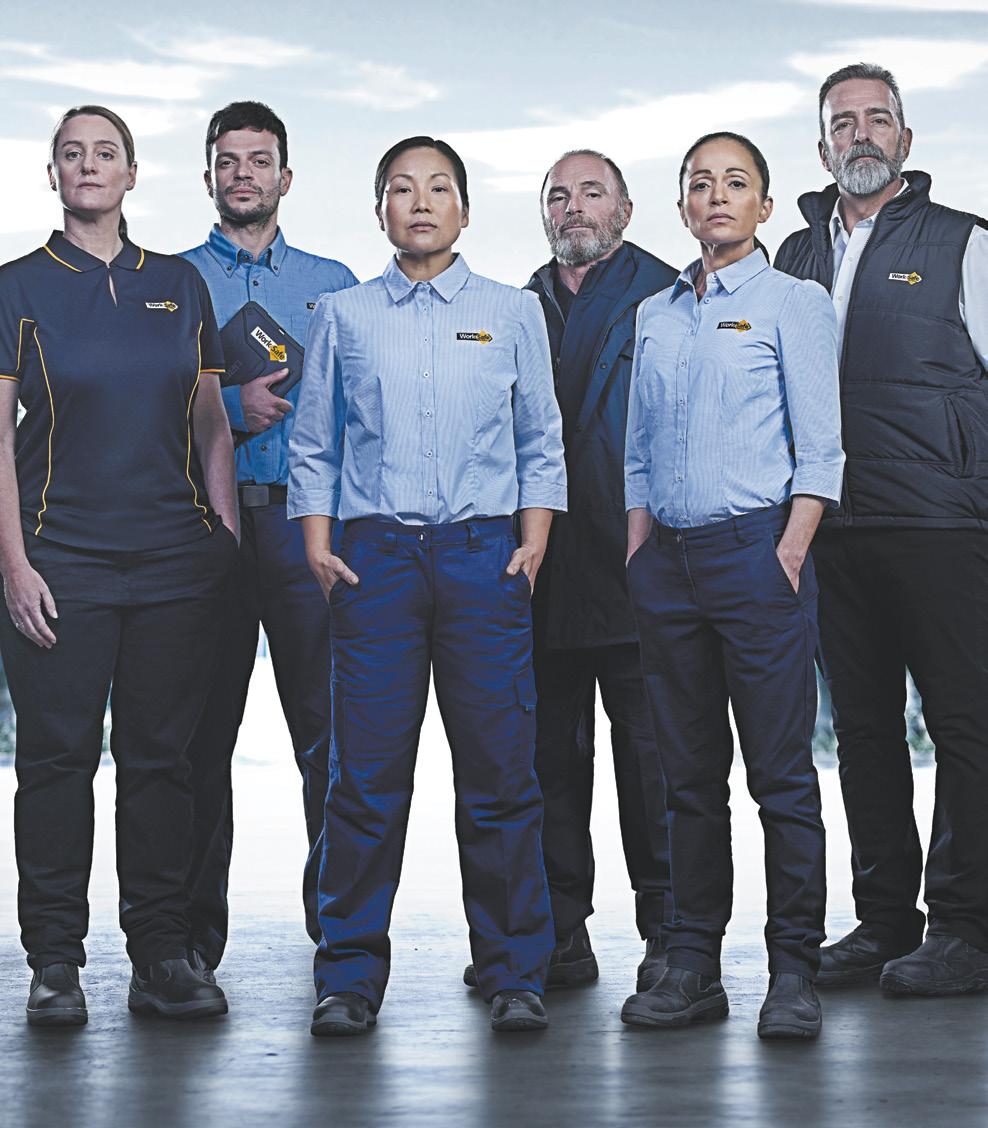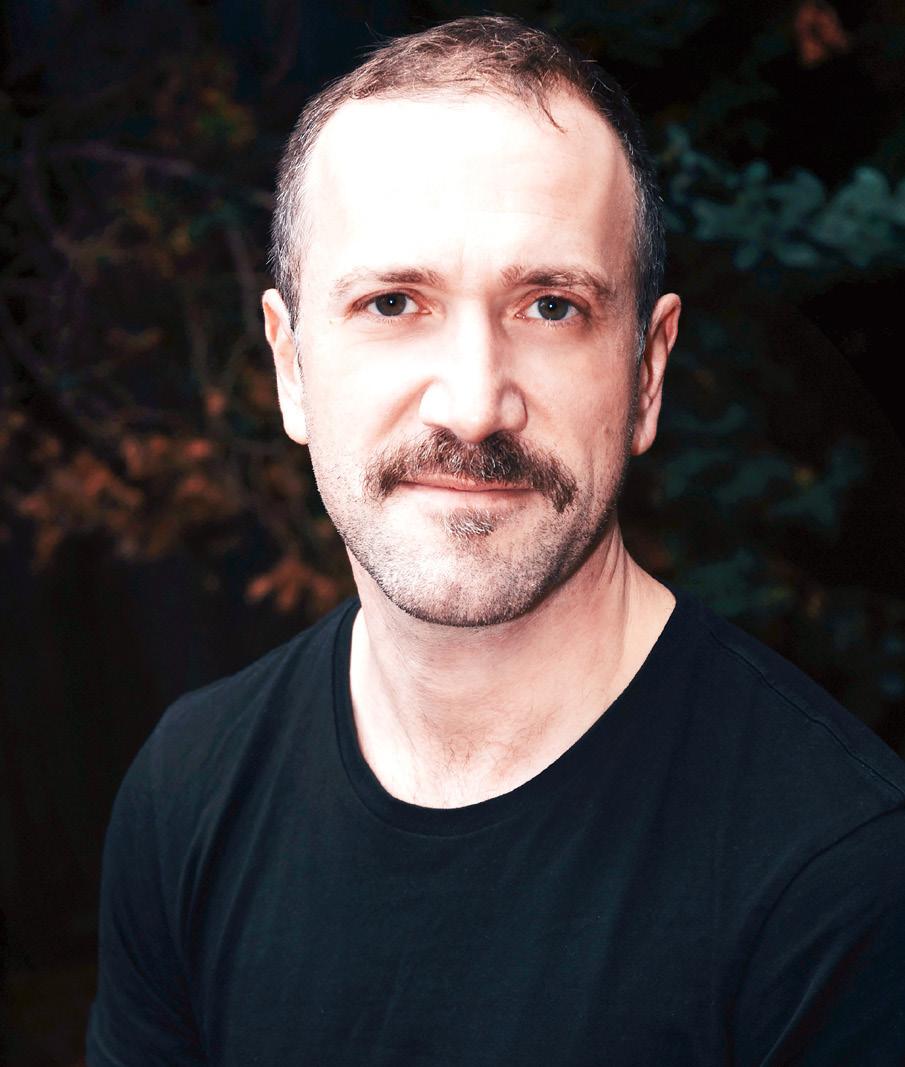
I just become myself in Hindi Ian Woolford
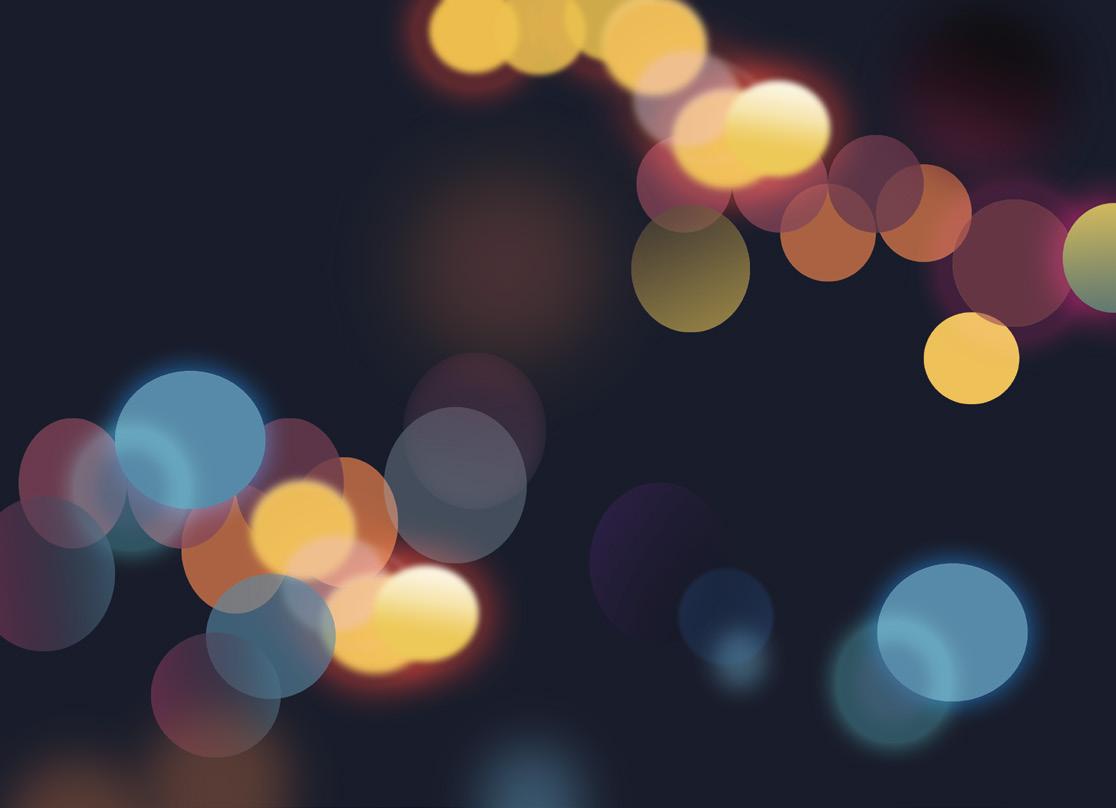
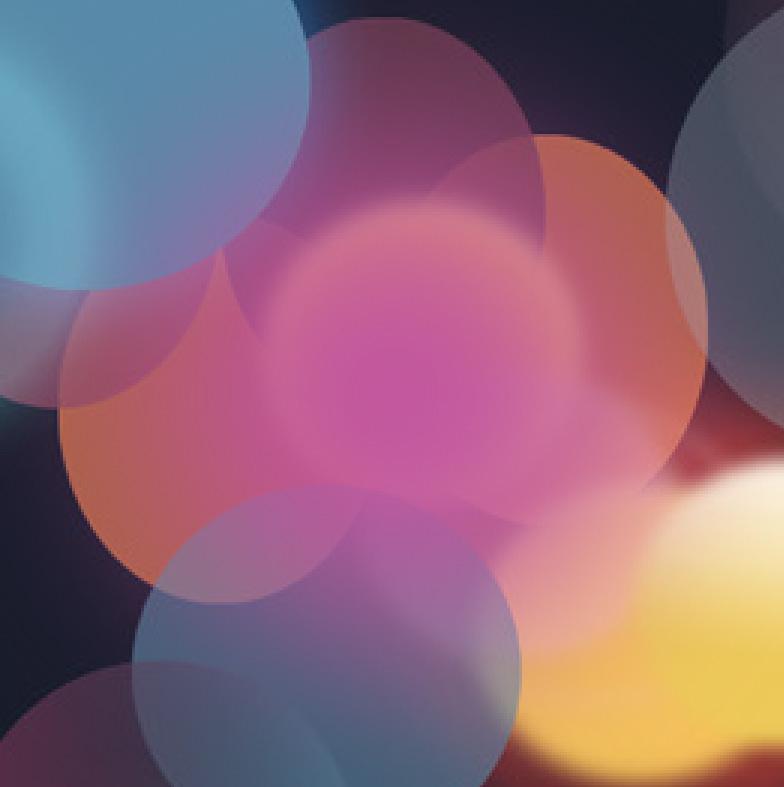

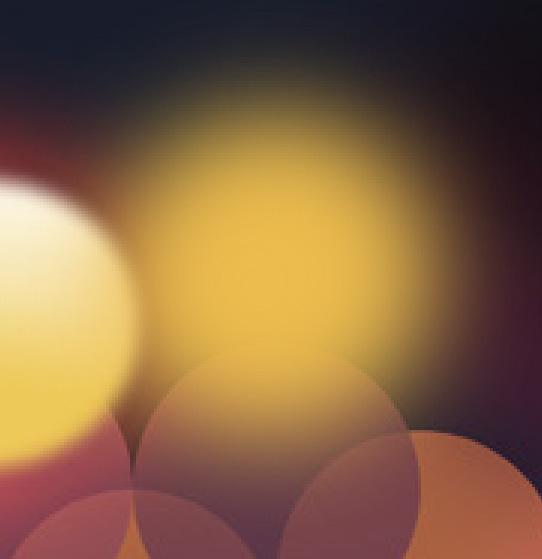







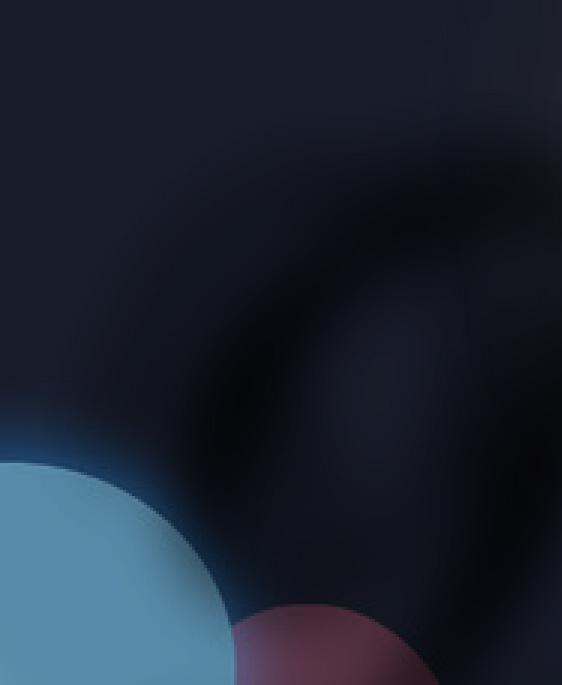

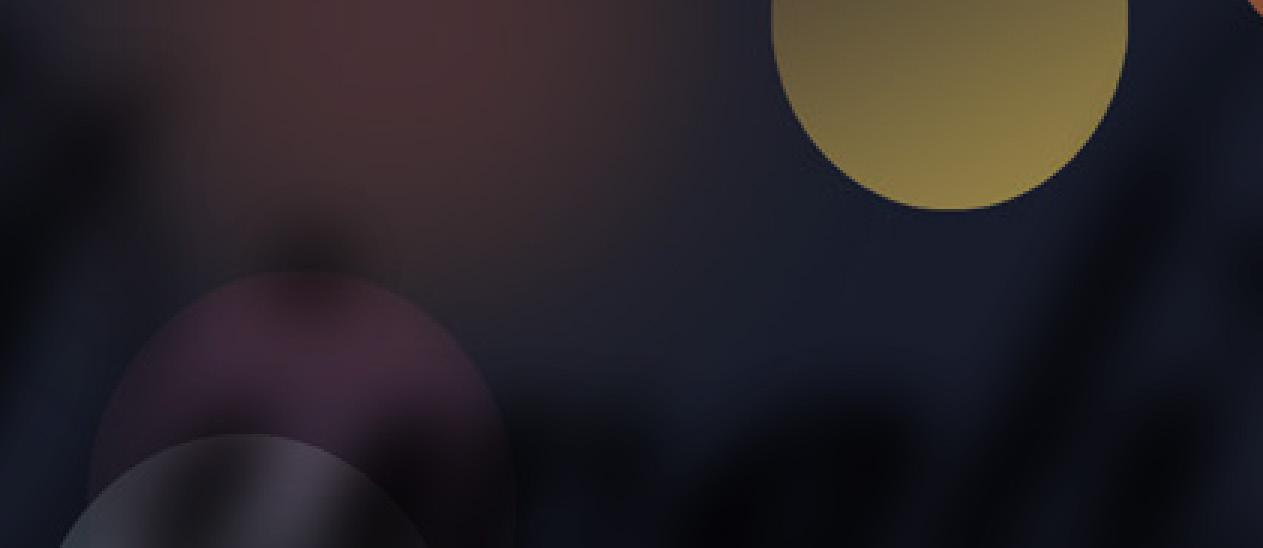








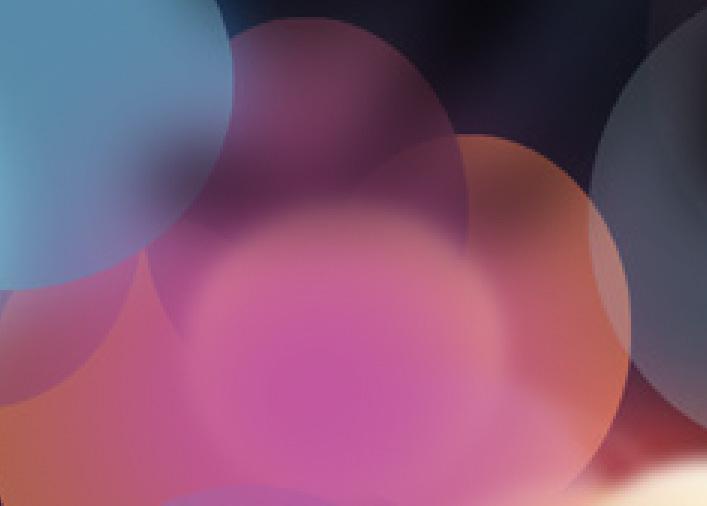




















I just become myself in Hindi Ian Woolford









































The experiment of multiculturalism, it can be said, has largely worked well for Australia. The European migrants who came Down Under after the Second World War have built safe and happy lives for themselves here, as have the first Vietnamese boat people who came ashore in 1976, and the Indian migrants who trickled in the last century and those that flooded in the last 15 years.

Over the years, multiculturalism has stamped itself in strongly, strengthening the fabric of the wider society. The reason why multiculturalism has worked, is without doubt that most Australians do believe in the idea: yes, the outliers who dog-whistle and bring out the negatives will always stick out of the masses, but the majority of Australians enjoy the day-to-day offshoots of a diverse population - be it the Eid festival in Lakemba or the Dragon dances in Chinatown. From their side, the new migrants - particularly those that may not have experienced this before - enjoy the democratic traditions of their new home, the freedom of speech and movement,
as well as religious freedom. There is dignity of labour and an overall respect for fellow Australians. One only needs to look at countries with a one-party rule, or where women are denied the same rights as men, or where gun violence is not uncommon, to appreciate what Australia has to offer in terms of security and quality of life.
Just over a year ago the Australian Bureau of Statistics confirmed that 33 years ahead of schedule, the Australian population reached the 25 million mark, and that the last 10 years contributed to 62% of the growth.

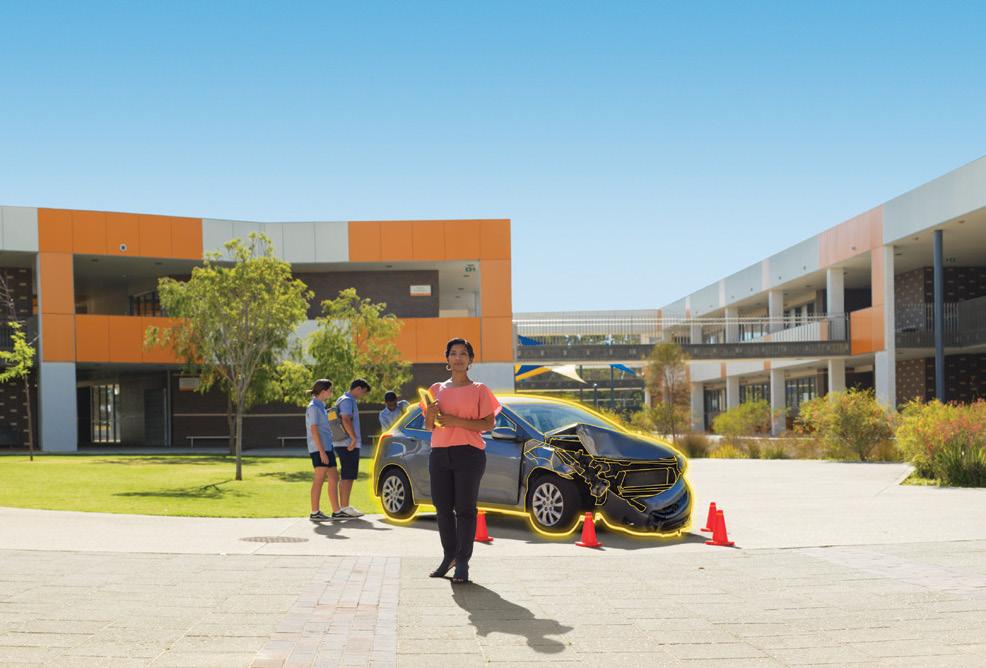
Those from India constitute 2.4% of the population: an astonishing number of 592,000 Indians now call Australia home. Their average age, 34 years.
How exciting is this number 34 (to borrow a phrase from our prime minister).
It is an age when one is old enough to be responsible and young enough to be greedy, to build on the opportunities provided in this new country. Professionally, chances are that this 34-year-old Indian migrant is well educated, in a professional position and ambitious to succeed. By 34, their value systems are well-established and they are strong contributors to their social and professional environments.
The needs of this young Indian migrant include schools, infrastructure and support, but importantly, they are
themselves contributing towards the fulfilment of these needs through the taxes they pay to government treasury.
With their average age of 34, the new Indian migrant is also slowing the aging of the overall Australian population, and with their contributions, making clear cut economic benefits to the nation.
For this 34-year-old migrant to advance personally and professionally, one option is identify a mentor from whom they can seek counsel. While in India there may have been a family elder, university or workplace mentor who played the role of guide, that connection is missing here. And while it is always exciting to discover new opportunities by oneself, there is no harm in being able to sound board with a mentor.
Master the art of conversation – this will allow you as a new migrant to learn about and understand your new compatriots, over and above the bubble wrap comfort that people of your own ilk provide you.
Be passionate about an Australian sport, over and above your religion of cricket. It creates more avenues for relationship-building at work, in your street, at your child’s school.
And yes, learn the words to your new national anthem.
It’ll be like adulting all over again, and in a new country: rather exciting, to make 34 your new 21.
As Hong Kong becomes a city fighting for its rights from China, the squabble has spilled on to the streets and universities around Australia. In recent days, pro-Hong Kong protesters were taunted with expletive-laden chants from pro-China activists before scuffles broke out in Melbourne and Adelaide. Violence has erupted at some of these rallies, with videos emerging of the two groups clashing with each other and punches thrown. While there are allegations that the pro-China students are being directed by Chinese authorities, there are also comments that the mainland students are being ‘spontaneously patriotic’.
So, when does dissent against opposition to your country of origin become acceptable? What about the Indian diaspora in Australia: at what stage does one fight back against what one feels might not be in the best interests of India?
In today’s world of fast flowing information and globalisation, news from ‘back home’ is received as soon as it breaks. Thirty years ago, when handwritten mail and landline phones ruled, there was a high level of disconnect with the politics in the mother country. Nationalism was always there, but it was patriotism delayed. Not so anymore. The daily news diet of most Indian Australians
is made up just as much of what is happening in India as it is of local issues, if not more so. Whether this is good or bad, is a discussion for another time. With this increased flow of information, the unconditional love for India is in inverse proportion to the amount of time one has lived here. And as the Indian
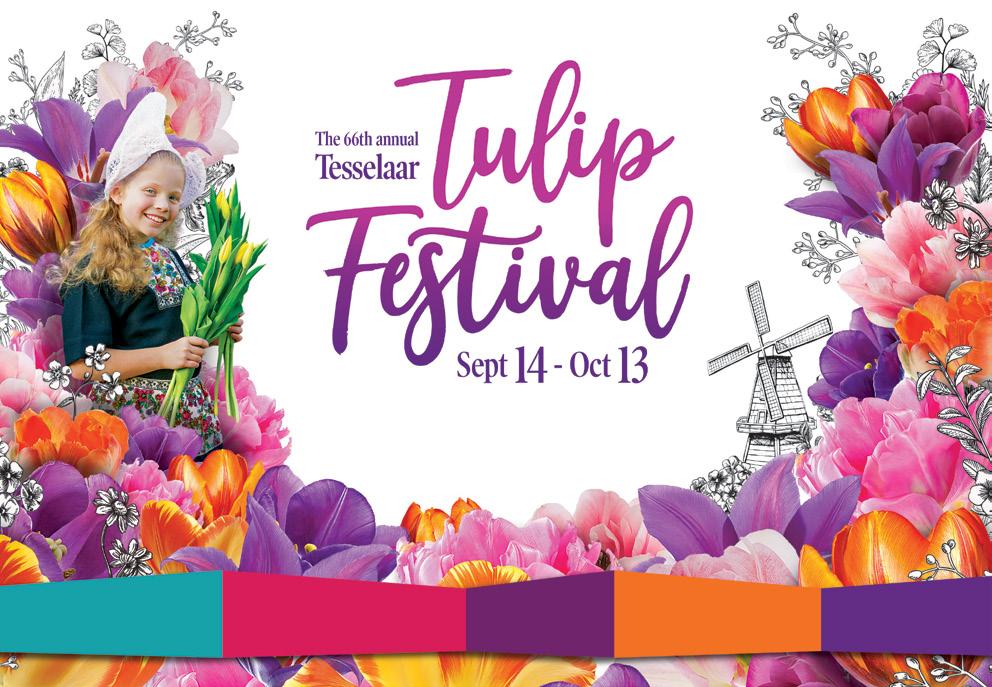
diaspora is composed largely of new migrants, chances are that they will be ‘spontaneously patriotic’ in their actions. This was clearly demonstrated by the very public rally in the streets of Sydney’s CBD against Pakistan when the Pulwama attacks took place. The rallies were loud and clear and brought sub-continental

politics to our shores.
Perhaps there is another way to show unconditional love for country of origin. A page can be taken from the book of the Jewish diaspora who seldom, if ever, take to the streets for their cause, rather are able to convey their terms to the powers that be, in a manner which cannot be ignored.
Time for the Indian-Australian community to win their debate through their intellect rather than with their brawn. To go about this, acquaint the local media with your views. Be strategic about your arguments rather than plain emotional. Present the facts and the background in a clear and concise manner. The local community is well regarded for its education: bring this to the fore when arguing for your side of the story.
Neither at the State or Federal levels is there an active group to lobby for all things Indian in Australia. It is time for the formation of ‘Friends of India’ political forums at both State and Federal levels so that, well, well-placed Friends can be made who can understand the Indian perspective on various issues. The diaspora can be ‘spontaneously patriotic’ in a more effective way than at street marches or clashes at rallies.
Pawan Luthra
In the wake of the Hong Kong protests spilling on to the streets of Australian cities, PAWAN LUTHRA wrote his editorial ‘Diaspora and dissent’ about the less divisive ways in which migrant communities could bring attention to issues from their motherland.

@jayshahIN wrote: There are too many assumptions in the article. Happy to write a counter with facts if given opportunity. Problem is that the torchbearers of dissent cannot handle dissent against them and their own fraternity.
Indian Link replied: We would welcome your views @jayshahIN; please email us at info@indianlink.com.au

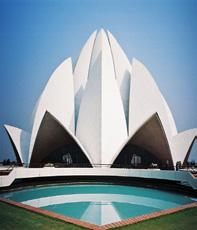
Kalyan Ram wrote: May I congratulate you once again for your editorial Diaspora and dissent. It is time the diaspora realised its potential for meaningful contribution to public discourse on issues affecting it.
In our Indian Independence Day feature (Aug-1 2019) we presented a photo spread of some of the interesting tourist activities/experiences in India.

Ruth Campion wrote: From my short trips to India, I can proudly claim to have experienced some of the activities you list in your feature: I have relaxed on Kovalam beach; spotted many peacocks; seen many lotuses but alas not plucked them; had a banana leaf meal in Kerala but missed the musical pillars you mention; have driven down the Worli Sea Link in Mumbai; bought some pashminas, seen the dabbawallahs (fascinating enterprise), but no, did not seek a Bollywood role in a daily soap(!) or take in a cricket match at the Wankhede.
What I would like to do on a future trip: all the Kashmir-related activities on your list (the skiing, the Ladakh lakes, the glaciers, the frozen river trek, the Pak border at Wagah); visit the Kohima War Cemetery (apparently there are some Australian soldiers buried there); see the Taj by moonlight; learn about the erotic sculptures at Khajuraho; see some more of your wildlife, and maybe try the Palace of Wheels.

If I have an extended holiday, although somewhat unlikely, I would love to visit the monasteries in Himachal, sit at the feet of the Dalai Lama, visit the IITs/ IIMS, see the Ganesh procession in Mumbai, and help clean the Ganges – all top suggestions.

Not particularly keen, though, on riding on your yak safari in Sikkim. And as for showering in the outdoors, maybe not – not even in the Taj Vivanta!
Send us a photo or Instagram one of Indian Link in your daily life using the hashtag #indianlink. We’ll pick on to feature in this column.
Do you think the idea of Ms. Marvel, Disney’s Muslim superhero, is a good one?

(63%) No. Because superheroes should be above religion.
(38%) Yes. It stresses on inclusivity and feminism at the same time.
Waah re google. #Amrita Pritam. Ian Woolford Hindi academic, on Google’s tribute to the Indian writer on her 100th birth anniversary
Prit Pal wrote: Ticking off the things I’ve done on your #IndiaBucketlist, #indianlink.
Jasprit Bumrah is a once in a lifetime talent.
Ian Bishop Sports Broadcaster and former WI cricketer

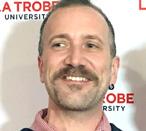
This place truly makes Australia "Down Under".
Readers Babita Lal, Charmi Kapadia Shah, Prabhu Kiran, Sonal Wahi, Anita Sam Robert, Ani Paulose and Bhanu Kothari identified this spot as Coober Pedy, SA.
This image is of the Serbian Orthodox church, Church of Saint Elijah the Prophet built in 1993.
Rohit Bajpai wrote: We visited this underground church this Easter.

What's the chitchat between Ayushmann Khurana and Nushrat Bharucha?

Rachna Gupta Khurana wrote: Ayushmann to Nushrat: "Aayushmaan bhav."
Tejas M Vaidya wrote: Ye babu, Shona, baby Aaryan tak theek thaa, AYUSHman nahi karega! I have options, you see.
Arti Asthana wrote: Swap outfits?

Arix Bishnoi wrote: Nushrat: Hey Anshuman you do know that your T-shirt doesn’t match your saree?
Anshuman: I know, but it does go with my sunnies!
Rishabha Chitalia Nayak wrote: Now this is what I call gender equality. Kerren Lumsden wrote: In this instance, less is definitely more....
Poonam Mehra wrote: Look at how well I have covered myself - because that’s what is expected from a lady still.

Vandana D'souza wrote: You may not know how to wear a sari, sweetheart, but I do.
Charmi Kapadia Shah wrote: Nusharat to Ayushman: “Ayushi,” you are everyone’s dream girl on screen but I am your dream girl.
Urmila Sumeet Kumar wrote: Abe, humari saadi ka he chura ke pehnliye…
Sa Ne wrote: Chal ab maine sari bhi pehen li promotion ke liye, ab apni film ko hit hone se koi nai rok sakta.
53% Kangana Ranaut
The huge dome of this architectural wonder is the second largest in the world, next only to St. Basilica in Rome.
Readers Vineeta Bajpayee and Tejas M Vaidya correctly identified it as Gol Gumbaj, Bijapur (Vijaypura)

Arun Jaitley was a reforming Minister for Finance and a great friend of Australia. He will be missed in India and by friends of India around the world. Vale. #ArunJaitley
Chris Bowen ALP leader

47% Karlie Kloss
One of my favourite things about Mumbai is the food.
#swatisnacks dahi sev puri and panipuri – outstanding!
Tony Huber Aust Consul General in Mumbai

An insightful examination of The Anarchy by Will Dalrymple on @indian_link Bloomsbury Australia
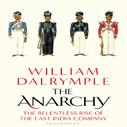
centre of his life and work.
BY PREETI JABBALWhen Ian Woolford feels stressed, he takes a walk in the bush and recites Hindi poetry.
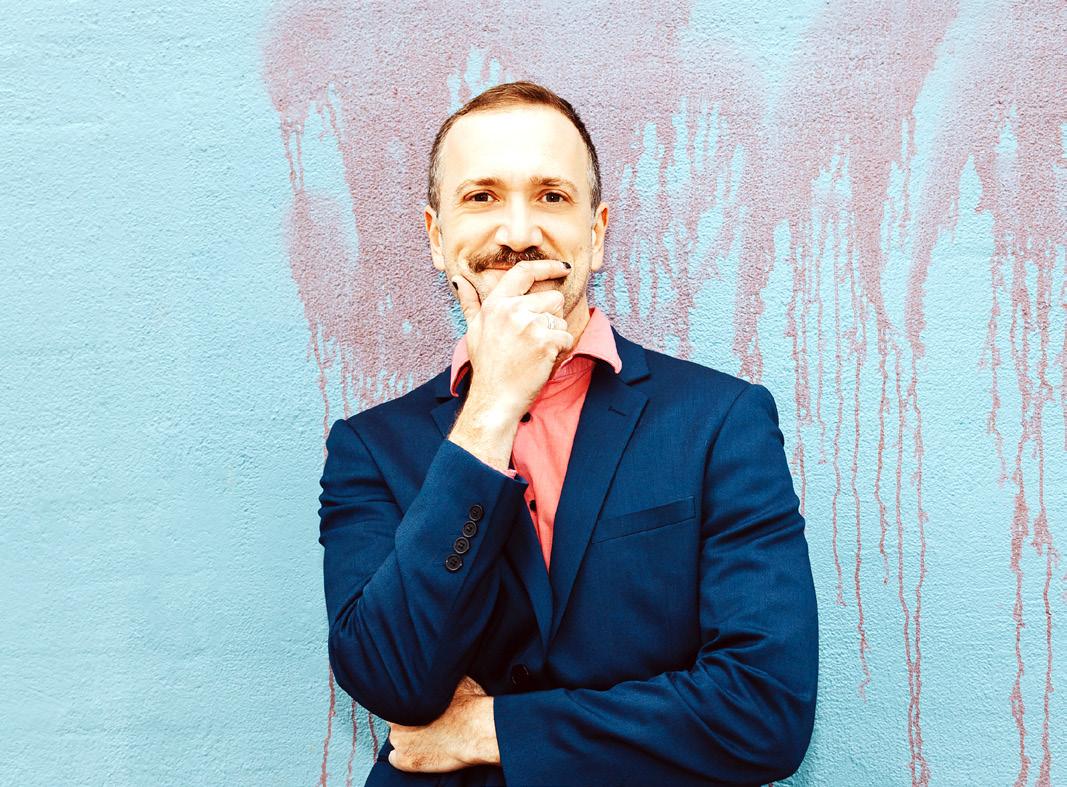
He looks at the Hindi letter ksha and is reminded of a koala.
When prime ministers ScoMo and Modi meet and felicitate each other in their own lingo, his tongue-in-cheek comment is: Har har ScoModi, ghar ghar ScoModi.
It receives much love on Twitter, among his 51,000 followers.
Ian Woolford’s love for our matrabhasha, his near native fluency as well as his pedagogical experience has won him many fans not only in Australia but across India as well.
Today, as Hindi lecturer at La Trobe University, the language continues to be at the
His first exposure came at the early age of nine during a trip to India with his mum (it was when he picked up his favourite Hindi phrase Koi baat nahin). It led to a lifelong love, not to mention a full-fledged career which saw a PhD and a proliferation of literary works.
“It was a slow coming actually,” Ian revealed to Indian Link, recounting his journey with Hindi. “I was originally at university in America studying music. I was a singer and I thought maybe I would even be a performer. When I travelled to Bihar for a research project on Bihari folk songs, I realised I could combine these two things in my life that I love, and I think that's when I decided that I want to follow this language path.”
The Bihar sojourn introduced Ian to regional languages like Maithili, Angika and Bhojpuri and he studied the literature, folklore and oral tradition of Eastern Uttar
Pradesh and Bihar. It went on to form the basis of his 2012 doctoral dissertation.
Ian’s current book project Renu Village, Hindi Literature and North Indian Oral Traditions draws on his fieldwork there, as he learnt to sing Bihari songs with the surviving members of a troupe formed by Hindi writer Phanishwarnath Renu.
Yet it is the legendary Premchand for whom Ian has a special regard.
“Premchand’s stories were the first ones that I read in Hindi,” Ian revealed. “I have a sentimental attachment to them as I cut my Hindi literary teeth on his work and it opened up the door to so many other writers both from past and present.”
Among more contemporary writers, Ian lists Jnanpith award winner Krishna Sobti.
“I am fascinated - and stunned - by Krishna Sobti’s work, because it spans so many decades. She passed away recently. She has been a writer from a very long time yet she wrote another novel recently, giving a
modern perspective on India, South Asia and on language and the way we use it to create landscapes and autobiography. She is a writer that is very much on my mind.”

As the coordinator of the Hindi Language Program at La Trobe University, one of the few universities in Australia offering Hindi language studies, Ian oversees all levels of Hindi. The three-year course incudes advanced classes in literature, cinema and media. The classes are open to undergrads, majors as well as PhD students
“La Trobe has a decade long relationship with India,” Ian described. “We have partnerships with universities in India including research collaboration. We send students there on internships. We also have a partnership with the Indian Film Festival so there is a deep and long-standing partnership with India at many levels.”
“The Hindi language program has been an important part of this,” he continued. “Students can start from complete scratch;
How an early exposure – and Bihari folk music – brought Ian Woolford to fall in love with Hindi
students with no background in the language can start from the very beginning by learning the Devnagiri script. With the completion of six semesters they can also go all the way to advanced level.”
“We also have quite a few students from India who may be comfortable, even fluent in the language but are interested in further studies. Maybe they have studied in the English medium and are interested in looking at the literature, at media or maybe look at their own fields through Hindi languages.”
Students, friends and fans got to see him flying the flag for La Trobe beside a star visitor recently, Indian actor Shah Rukh Khan, on whom the university bestowed a special honour. Ian admitted to followers beforehand that he was excited to be meeting SRK.

“I got to chat with him briefly and I just said, in Hindi, congratulations on your honorary degree,” Ian recalled as he reflected on the packed out event attended by students who came in droves to catch a glimpse of their favourite Hindi film star. “I also quickly let him know about what we do and the Hindi program at the University. The students learn from watching scenes from his films so it was quite special to have him here. I think he was quite overwhelmed with the whole day; it must have been quite an experience for him to have a University honour his lifetime achievements in such a way.”
What aspect of Hindi has sustained his own personal interest over time?

“Music and poetry absolutely”, said Ian without hesitation. “I enjoy reading, teaching and thinking about poetry. I start thinking in the language better and suddenly I just become myself in Hindi, if that makes sense. It’s interesting I did not really enjoy poetry as much when I was reading it in English. However, learning how to read Hindi poetry in my early days when I struggled with it
making efforts not necessarily to promote the languages but to ensure that their platforms are more open to Indian languages because they are realising that people want to use those platforms to communicate. (This is true) not just in Hindi but in all Indian languages.”
Ian’s social media is an affirmation of his ability to engage his digital audience, particularly young students. Indeed, he might well be single-handedly promoting the language and its poetry in Australia. What is the intent behind his content, we ask him.

“I have no intent other than if I am working on a poem or idea, I let people know what I am doing, and it cheers me on,” he replied with a smile. “I have a huge amount of support and encouragement from people online, in India and around the world. It makes me feel very cheered on that people care about these things and it is important to them.”
It is with similar modesty that Ian makes light of the diverse cultural perspectives in his life, a UK-born American who lives in Australia and works in India.

“You’re right, my story does involve quite a few continents but it is not that unusual in the world especially in a place like Melbourne. It’s not that uncommon even in terms of language in a place like Melbourne as this is a huge diverse city with so many people who speak so many different languages. I like to think that is not much to reconcile, and just like everyone else, I am just living my life.”
actually made me learn how to enjoy English poetry as well. That’s my main call these days and I try and share that with my students as well. I find that a lot of students would enjoy reading poetry, listening to music and thinking on those terms.”
Ian attracts quite a fan following with his video recitations of Hindi poetry on social media.
Waah re Google, #AmritaPritam he tweeted recently, as the daily doodle marked the illustrious Indian writer’s 100th birth anniversary. He followed it up, as expected, with a rendition of his favourite lines from Pritam’s works.
It was but the latest in a series of Twitter tributes to kahaanikars, upanyaaskaars and aalochaks on their janamdiwas and punyatithis. Set against that familiar backdrop of his book-lined office, these short tributes are delivered straight from the heart, packing such feeling in them that you are left not only in awe of the personality he is felicitating, but you also make a mental note that you must go back and read them all over again.
It makes you marvel also that new technologies and new media may be helping the cause of languages.
Ian, not surprisingly, is passionate about this idea. “Computers and cyberspace actually give life to languages. With Hindi, one of the most widely spoken languages in the world, a large number of people communicate using the Devnagiri script, and that is why technology companies have had to follow suit. Google, Facebook and Twitter are
About the potential of the language to aid in bilateral ties between Australia and India, Ian is careful not to exclude other languages.
“English is certainly enough to get a foot in the door in terms of trade relations or bilateral relations, but for people-to-people relationships, training in an Indian language is the way to keep the door open to have long standing and deep ties. I think it's important to stress that all of India’s global languages for example Tamil, Gujarati, Punjabi and more are equally important.”
The same attitude is evident as he talks about the upcoming Hindi Diwas, celebrations for which have taken on increased significance in Australia’s Indian community in recent years.
“Hindi Diwas is a wonderful day to remember that Hindi is one of many great languages in India. If your mother tongue is Hindi or if you are learning it as a second or third language, celebrate it because it’s a beautiful language. But I think Hindi Diwas is a very good day also to remember that all languages in India are beautiful and they have traditions tracking back to generations.”
Thank you, Ian babu, for that last thought.
When Lawson Tanner sings Galliyan teri galliyan (the Ankit Tiwari number from the film Ek Villain), you might as well believe he means it as a tribute to Hindi, and to India. Mujhko bhaavein teri galliyan…
Lawson first stumbled on to Hindi as a high school student when he googled “Bollywood” with a friend – while in science class. The search took them to a clip from the blockbuster hit Hum Saath Saath Hain. It proved to be much more interesting than the lesson that was on, and Lawson was hooked.
He saw his first full-fledged Bollywood film shortly after – Karan Johar’s Student of the Year. An Indian friend translated and explained aspects of culture. “I loved the surprise aspect and unpredictability in Bollywood. Every movie will break down into song and dance and that's regardless of the actual genre!”
Lawson’s proficiency in the language increased as he watched more and more movies and music videos.
He began doing “killer renditions” (his own words) of Bollywood hits, but it is his translations of Bollywood lyrics that will have you in splits. Guess the song from these Lawson translations: My body is so hot that it’ll light up your cigarette and Stick
my photo to your heart with some superglue. Today, an assistant editor at a television production company by day and a Hindi music bathroom performer by night, Lawson’s interest in Hindi has led him to communicate in the language with fluency.
The 22-year-old has just returned from a year-long trip to India, where his favourite

trick on unsuspecting locals was to catch them off-guard by saying “Mujhe Hindi aati hai, yaar”.
Of course his knowledge has Bollywood has refined as well: his current favourite is Vidya Balan as opposed to his early favourite Kangana Ranaut (thanks to Queen), and he appreciates that special
Melbourne’s Diana Theseira Sinha learnt her Hindi by simply being around native speakers.
“At uni I had many Hindi-speaking friends, and they would frequently break out in their language,” the Singapore-born told Indian Link. “I didn’t understand, and I wanted to understand.”
Through the years, she slowly began to “catch a few words”to understand what was being communicated, and even string together some words into coherent sentences.
“Initially I developed my skills mostly through conversation, picking up on key words, and then Bollywood films taught me some fancy words, which people don’t use in everyday life,” she revealed.
That initial exposure came in handy when she met and married Vishal Sinha, a native speaker whose family originates from Bihar and whose primary language is Hindi.
Struggling to find a happy medium of communication with her new family, Diana’s skills in Hindi have allowed her to communicate effectively with her in-laws.
“It has definitely strengthened my communication especially with my mother in-law,” she said.
As she continues to find herself immersed in the Indian community and
effects have improved considerably.
Lawson views Hindi as a gateway to truly understanding Indian culture. “Being a Hindi speaker enables you to learn a whole lot about the culture that you just don't really get when you're looking at it through the lens of the English language. Hindi actually carries with it a whole lot of meaning that just can't be translated.”
Currently studying an online Hindi course at ANU, Lawson acknowledges that learning the grammar and literature are beneficial, but immersing oneself in the culture and asking questions is key to learning the language.
“Get out of your tourist bubbles and become explorers,” he advises western visitors to India. “I know people who have lived in India for five years, and didn't learn a word of Hindi. And I’m fine with that, but of course they really don't know anything about the deeper significance.”
Equally he is amazed at Indian-origin friends who can’t speak the language, or pretend they don’t. His advice to them as well, would probably be, travel to India! He happily concludes, “India mein Hindi seekhna lajavab hai.”
Check out Lawson Tanner on Indian Link’s YouTube channel (www.indianlink.com.au)
Raphela Jude
Indian culture, Diana has made concerted efforts with her Hindi proficiency.
“I know now that each character in Hindi has a different sound, and some of these sounds don’t exist in the English language,” she observed. “I still struggle with certain sounds such as the ‘gh’ in ‘ghar’. So I’ll say it as ‘grr’! I would just go forwards and backwards with it when I was learning!”
Although this has improved, she disclosed that there are “still some sounds” that trip her up.
“If I say it fast and mumble, then it’s okay!” she laughed.
Despite not being fluent in Hindi, when in the “right frame of mind” Diana is able to have full conversations, however other days she struggles to “get out one word.”
“I hope my young daughter Zara will be able to learn Hindi as she gets older, although it's currently a completely foreign language to her.”
Originating from the Persian word Hind, meaning ‘land of the Indus River’, Hindi is spoken by an estimated 425 million people as a native language, according to the BBC. However, through family, migration and admiration for the language, approximately 120 million people now speak Hindi as a second language.
Riya Kiransend Money Overseas most reliably and securely within 10 minutes through moneygram send Money to any bank account at the best rate and flat fee of $15 (No Limits applicable






exchange your currency with us, we give the best rates and do not charge any commission send money to our own branches in all major towns and cities in Fiji and New Zealand


Ask us about our commercial business, we do import payments and all international business related remittance at best rate and a flat fee of $15.00 only
Tejinder Kaur invested in the Sparkling White Smile Ellenbrook franchise after following the journey of Sparkling White Smile founder, Alison Egan. Tejinder, who is a qualified nurse was first introduced to the mobile teeth whitening service after reading an online news story about Alison, who was also studying nursing when she dreamt up the idea for Sparkling White Smile.
“I was really inspired by the success of Alison, after learning she had a similar career background to myself. I began following Sparkling White Smile on Instagram and after seeing the technicians out on the road, meeting new clients, offering them an amazing service and having so much fun whilst doing it, I knew I had to be part of it” Tejinder said.
Tejinder has been able to tailor her offering to best service her community, as the only Western Australian Sparkling White Smile franchisee who is fluent in Punjabi, Hindi and English.

While dentists work with 30% peroxide solutions, Tejinder uses 6% peroxide, offering a much healthier solution to cosmetic teeth whitening. Signature treatments are also broken down into 25 minute sessions, meaning teeth sensitivity is little to none in comparison to dentist in-chair whitening. The procedure takes around an hour and a half, with no preparation needed.
“In terms of aftercare, the only rule is no red wine, coffee or anything with artificial/ deep colour. I also always suggest my clients top up every month to keep their smiles sparkling and radiant,” she concluded. Tejinder’s mobile treatments have taken Perth by storm, with no signs of slowing. She offers two signature treatments; The Triple Treatment and The Ultra White Treatment, starting at $300 for single bookings.
@sparklingwhitesmile.ellenbrook 0420 615 797
www.sparklingwhitesmile.com.au

How would you describe your health now?
My health, though there’s a fair amount of issues, is quite stable now.
My right side is weaker. I was a righthanded person. I manage to sign my name but I struggle to hold a pen. Fortunately, with technology, we don’t need to write much these days, but it does require one to type. My typing speed is slow.
Temperature sensation has returned to some parts of my left side but it is still absent in other parts.
I am now able to walk independently with a walking frame. I am still learning to walk with a quad stick and walker, where one person has to support me.
I am able to talk now since the tracheostomy is removed. The sound is low and somewhat broken so listeners have to make an effort to understand me. I do not normally attempt phone conversation.
I am on a PEG (Percutaneous Endoscopic Gastrostomy) feed, nil by mouth.
What medications/treatments are you still on?
There are no stroke related medications except for Asprin. It is basically given as blood thinner to avoid any future occurrence of stroke. Then there is medication so this body does not reject PEG feed.
I go for a physiotherapy session once a week, dental physiotherapy once in three weeks, speech therapy once a month and occupational therapy as required.
What is your normal day like now?
My carer comes at 8:00 am daily. She measures my body temperature and blood pressure. She then checks my appointments for the day and puts my morning feed on. After feed I complete my daily routine of brush, shave, shower etc. If I have an appointment, she drives me there, else we go for a walk etc. She then puts on my afternoon feed, finishes it and leaves at 1:00 pm.
The afternoons, I normally spend on my computer.
The afternoon carer comes at 4:00 pm. She puts on my feed. Then either we go out or work through my exercise routine between my computer work. She then puts on my last feed of the day before finishing at 8:00 pm.
My wife Manjusha then helps me to my bed and we watch television till about 11:30 or 12:00.
To what extent are your normal activities back – driving, work, housework, shopping, socialising, travelling, leisure activities?
The day I suffered the stroke, my driving license was cancelled as per rules. I now have to go through Occupational Therapy (OT) Off Road driving assessment, a medical certificate stating I am fit for
driving and an OT On Road driving assessment. I passed the OT Off Road driving assessment. It was pretty tough. One of the test sinvolved an image that appeared on screen for 3 seconds. One had to note all the objects in the image and explain to the examiner what moves each object is expected to take. I got 30 out of 32 correct. The two I lost out on had 4 or more objects in the image and I missed one in each!
Since I got a high score, I got the comment from my occupational therapist that I could be an over confident driver!
My GP and neurologist are currently organising my medical certificate. In the meantime Ihave arranged for a bicycle assessment.

House work and shopping were never my thing, so I do not miss them!
I was not able to talk at all for an entire year. After the initial rush of visitors receded, there were a few who kept meeting. Then again there was a rush when
the tracheostomy was removed. Because of my nil-by-mouth condition, and socialising is always associated with drink and food, my friends started feeling uncomfortable drinking or eating in my presence. I have therefore limited my socialising to mainly electronic media.
I have not travelled since the strokes but would like to soon.
Are you still seeing the doctor?
Generally no. If I feel the necessity, I take an appointment like everyone else.
What have you learnt about stroke?
Mainly there are two types of strokes, Haemorrhagic and Ischaemic. Haemorrhagic stroke is when a vein bursts open and the brain fills with blood. Ischaemic stroke is when a blood vessel gets blocked by a clot. Ischaemic stroke is the more common of the two. This is the type of stroke I suffered. It occurred in the brain stem, hence it is called brain stem stroke.
The brain stem is where nerves cross over. It also controls vital functions like breathing, heart beats, swallowing, balance etc. The stroke itself may not kill a patient but the effect of it may be fatal. Hence there are only 114 known survivors of brain stem stroke. Generally, a brain stem stroke is known as a killer stroke.
What have you learnt about yourself in this whole process?
More than myself, I have learnt a lot about the functioning of the human body. The
Did you know that there is one stroke every nine minutes in Australia? And that more than 475,000 Australians are currently living with the impact of stroke. Stroke can strike anyone at any age - even babies can have strokes
This National Stroke Week (September 2-8) Stroke Foundation is encouraging Australians of all ages to learn the most common signs of stroke - F.A.S.T. You can be a F.A.S.T. hero and save the life of a loved one, a colleague, a stranger or even yourself by understanding the F.A.S.T. message and calling an ambulance straight away if you suspect a stroke. Using the F.A.S.T. test involves asking these simple questions:
• Face Check their face. Has their mouth drooped?
• Arms Can they lift both arms?
• Speech Is their speech slurred? Do they understand you?
• Time is critical. If you see any of these signs call triple zero (000) straight away.
movements that one makes routinely, may appear simple and normal, but I know how complex they can be.
I learnt that you can actually forget how to move your arms and legs, and you have to retrain the body. As a child, your bones are flexible and it is easy to train yourself, but as an adult, it is much more difficult, especially with a fear component added.
I also learnt how easy it is to get misunderstood when one cannot speak.
Describe the day it happened.
It was morning of 6th June 2017. I was woken up by a dull headache on the left side.
I walked to the study and turned on the laptop. I found the letters difficult to read. I switched off the lights and went back to bed. The dull headache persisted. I woke up later and started my daily routine. While shaving I noticed that there was something not normal about myself, besides that dull headache.
I went to the GP who referred me to an ophthalmologist. The ophthalmologist asked me to go to the hospital Emergency Department, as she suspected I was getting a stroke.
I presented myself to the Emergency Department at Blacktown Hospital. A series of events then occurred, and I ultimately collapsed on the floor on the morning of 7th June. I was helped back to bed by the nurses and the ward person. Later, I was discovered by my wife in a significantly deteriorated condition, and she raised an alarm.
as he works through his remarkable recoverySunil Ranadive with his wife Manjusha
It’s rare to find an entire exhibition devoted to South Asian artists - not only those who live and work in the Subcontinent, but also expats who live here in Australia.
The ongoing exhibition at Melbourne’s Bunjil Place, Continental Shift: Contemporary Art and South Asia, is a welcome initiative, bringing together the work of fourteen artists.
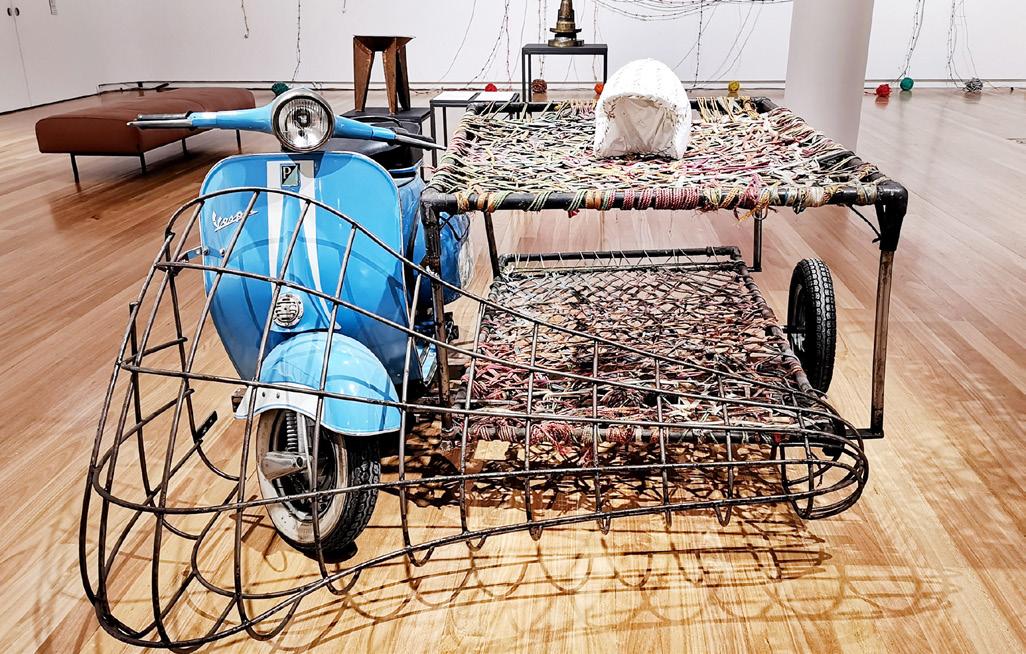
The title itself is a wonderful play on ideas, suggesting not only the origin of the artists and thinkers whose works are on display, but refers also to the swings that are taking place in identity.
The works are explorations about the self; equally, they are statements about the societies in which we live – South Asia, Australia, the world at large.
Right at the outset, in the piece Sangeeta and Fuji, we see the issue of identity as made up of a number of different components. Durga - the warrior goddess, the invincible, and the undefeatable - gets a contemporary avatar in artist Kate Beynon’s work.The piece represents Beynon’s friend and fellow artist Sangeeta Sandrasegar as a modern day Durga who, according to Beynon, symbolises ‘positive, feminine creative energy and a protective force’.
First exhibited at the Archibald Prize in 2014, the work seamlessly combines elements of Australian, Indian and Chinese cultures. Look closely and you’ll notice Sandrasegar holding painting tools in her left hand while the right symbolises the Chinese gesture of greeting. Durga’s official rider, the tiger, gets a catty makeover to become Fuji, the painter’s pet cat.

Grappling with her own sense of identity, Fiji-born artist Shivanjani Lal’s fascinating video art is titled Kala Pani (literally ‘black water’, a term that describes how crossing the seas to foreign lands leads to a loss of social respectability). Through the visual metaphor of hands, spices and water, Lal reimagines Kala Pani as a site of healing and reforming imagined identities. The work represents the artist’s internal dispute about the identity of her community, that she feels will always the bear the mark of India, the motherland of her forebears.
In Speak No?, Australian artist Texta Queen presents a self-portrait that reveals both discomfort and disconnect. In a rich amalgamation of colours, an urban monkey covers the artist’s mouth, and beautiful dupattas float in the background. Is our colonial history the proverbial monkey on the back that seems to be keeping us from flowering to our fullest?
Our sense of identity is inextricably bound with the place from which we come. Karachi-born artist Adeela Suleman, in

South Asian artists presents explorations of the self in terms of who we are, and where we are
her hand-beaten stainless steel sculpture
The Warrior, draws parallels between childhood narratives and local mythologies in Northern India (where she grew up) and Pakistan (where she currently lives). Peacock feathers that morph into spears draw attention to the painful presence of violence in current day Pakistan.
Sounds of circuit boards and transmitters echo across the length and breadth of the room emanating from the exhibition’s centrepiece, Mumbaibased Reena Kallat’s Woven Chronicle


A magnificent in stallation of a world map made with plastic coated cables that refer to barbed wire, this is a contrasting reminder of impenetrable fences as well as a symbol of connectivity. The crisscross mesh of wires traces migration routes taken by various groups of people including refugees, contract workers, indentured labourers as well as professionals travelling for work; the speakers represent a constant transmission of ideas, information and people transcending boundaries.
In another work, a vibrant blue Vespa
scooter attached to a colourful woven charpai (bed commonly found in rural India) inevitably catches your attention.
This piece by Sydney-based Richard Goodwin called 1- √2 charpai for Mumbai showcases the artist and his friends Ishan Khosla and Trent Jansen’s socio-cultural and economic observation of Mumbai over three weeks. Here Goodwin creates a

‘high-rise bed on the move’ pondering on the lessons that Mumbai slums can offer 21st century architecture and society. The installation also addresses the challenges of ever-expanding megacities like Mumbai. Meanwhile, there is also room for a bit of Australian history and identity.
Peter Drew’s Monga Khan is an image that the Indian Australian community is well acquainted with, given we’ve seen it on the walls of city buildings for some time now. The image of this early settler from the subcontinent, a hawker by trade, and its proliferation in recent times, is a powerful statement of the early diversity of Australian culture.

At the very essence of it, the exhibition throws light on our evolving identities as individuals as well as communities. It prompts the question to ourselves, what continental shifts have shaped our own narrative?
Continental Shift: Contemporary Art and South Asia is currently on at Bunjil Place, Narre Warren, until 22 September. Visit www.bunjilplace.com.au for more details.

The works are explorations about the self; equally, they are statements about the societies in which we live – South Asia, Australia, the world at large.Ramesh Mario Nithiyendran: ‘Thinking about Kali’ Reena Kallat: ‘Woven Chronicles Peter Drew: ‘Monga Khan’ Shivanjani Lal: ‘Kala Pani’ Texta Queen: ‘Speak No?’
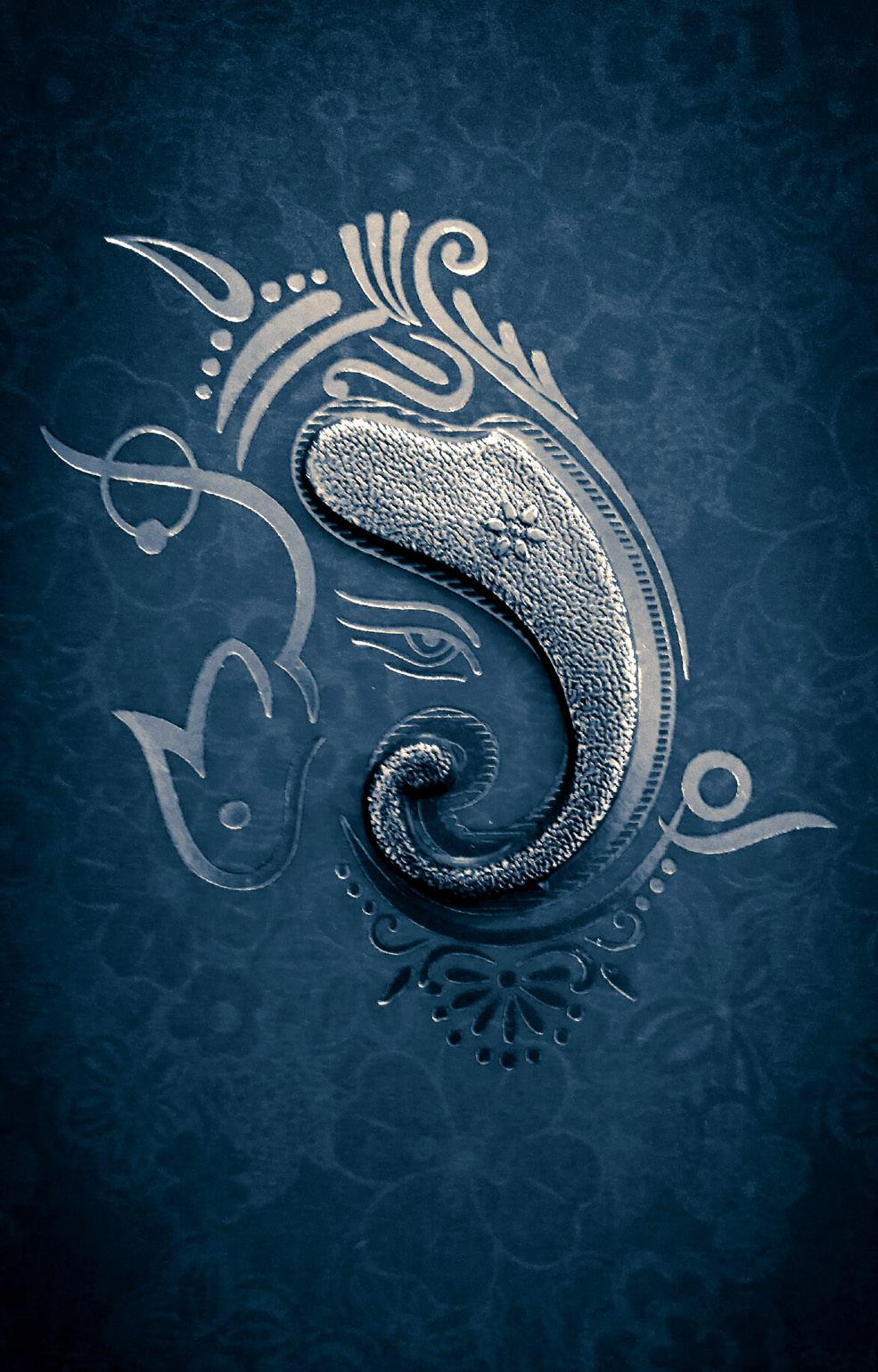 Photo: pexels.com
Photo: pexels.com
28. Gadadhara
One who has the mace as his weapon
29. Gajakarna
One who has eyes like an elephant

30. Gajanana
Elephant-faced lord
31. Gajananeti
Elephant-faced lord
32. Gajavakra Trunk of the elephant
33. Gajavaktra
One who has mouth like an elephant
34. Ganadhakshya
Lord of all Ganas (Gods)
35. Ganadhyakshina
Leader of all the celestial bodies
36. Ganapati
Lord of all Ganas (Gods)
37. Gaurisuta
The son of Gauri (Parvati)
38. Gunina
One who is the master of all virtues

39. Haridra
One who is golden coloured
40. Heramba Mother’s beloved son
41. Kapila Yellowish-brown coloured
42. Kaveesha Master of poets
43. Krti Lord of music
44. Kripalu Merciful lord
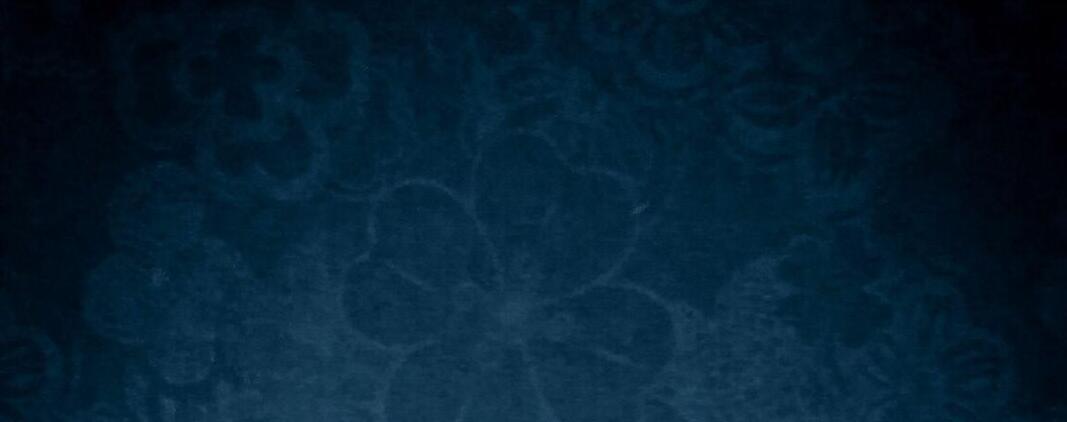

45. Krishapingaksha Yellowish-brown eyed
46. Kshamakaram The place of forgiveness
47. Kshipra One who is easy to appease
48. Lambakarna Large-eared lord
49. Lambodara The huge bellied lord
50. Mahabala
Enormously strong lord
51. Mahaganapati
Omnipotent and supreme lord
52. Maheshwaram Lord of the


In 1859, Australia’s first native-born novelist John Lang wrote Wanderings in India and other Sketches, an entertaining travel book. Having practiced law in India (Lang’s clients included the Rani of Jhansi), starting a paper in Meerut and ultimately dying in Mussoorie, Lang and his book (or at least, the title of his book) are the inspiration behind Monash University’s collection of essays titled Wanderings in India: Australian Perceptions, published in 2012. Part historical, part sporting and political, this one’s a really cool travel accessory if you’re Indian, Australian or anything in between!

Deserve Me is the debut single of Amritha Shakti, the Australian/Indian singer-song writer, who for years has been covering a range of songs across genres including jazz, R&B, soul, Indian fusion and Bollywood. A celebration of South Asian women, the video for Deserve Me is gloriously filmed and features around 30 South Asian womenfrom Pakistani, Indian, Sri Lankan, Nepalese and Bangladeshi backgrounds. Amritha’s familiar and compelling backstory, the video’s stunning visuals and her rich, husky voice make this lovely (and catchy) single a great soundtrack to a wistful winter evening.
Only a few steps away from the restaurants on Wigram St in Harris Park, sits this little hole-in-the-wall eatery, Shri Refreshment Bar. Stand by and watch the rotis fluff up, on a large open hot plate. We make about a thousand each, nightly, the girls tell you smilingly. The phulkas and stuffed parathas entice you in, but before you leave, you’ll have tried the street food favourites kachori chaat, matka rabri and masala chai, and Shri’s signature paan. Our top pick? Chapatis straight off the tava with two home-style curries, under $10.
Long before there was the shady Guruji (Sacred Games2) or even the utter nut job Charles Manson (experiencing a brief pop culture revival thanks to Mindhunter season 2 and Once Upon a Time in Hollywood), there was the OG holy man with his cult following – Bhagwan Rajneesh aka Osho. ICYMI, Netflix’s 2018 docu-series Wild, Wild Country is a brilliant deep-dive into all things Osho, especially the maroon robe-clad “Rajneeshes” (his followers), with particular focus on the nearly-murderous antics of Ma Anand Sheela and an unwitting Australian Jane Stork. Binge score = 10/10!

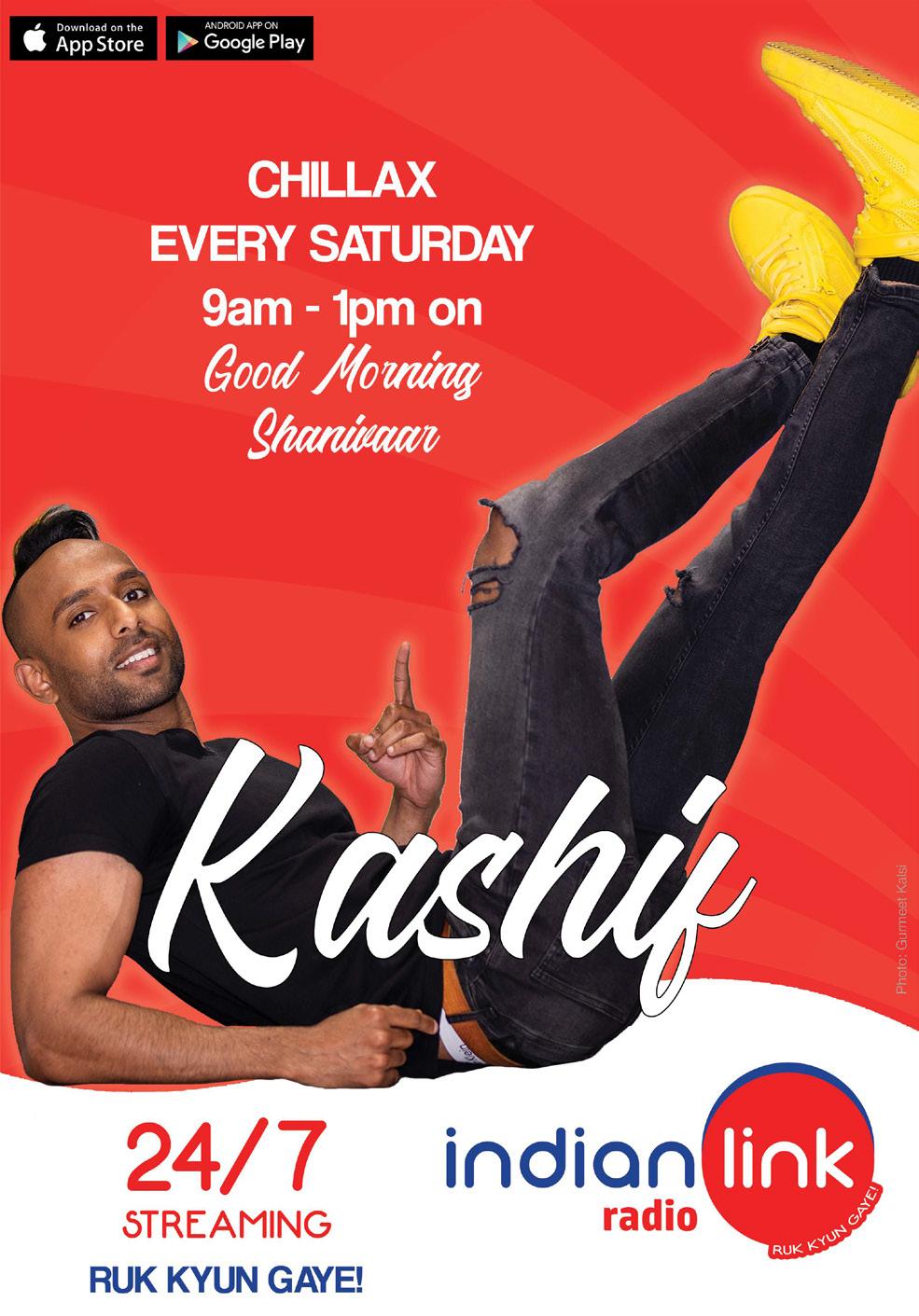

 BY CHITRA SUDARSHAN
BY CHITRA SUDARSHAN
It was quite by accident that I stumbled upon a prodigious and erudite scholar of Indiaespecially southern India, during a recent trip to India. The book in bright orange titled Tamil: A Biography beckoned to me from the bookshop display shelves. As I began thumbing through, I was drawn irrevocably into it and found myself searching for and devouring books by this scintillating Iowa-born academic who had made Jerusalem his home, and on the way learnt and mastered several Indian languages and their literature.
David Shulman has written a series of deeply scholarly and engaging books on southern India. However, his magnum opus is Tamil: A Biography (Harvard 2016), a detailed account of one of the few ancient languages that has survived more than two millennia in more or less its original form among its 80 million speakers scattered around the world. Shulman even traces some words in the Hebrew Bible that have Tamil origins!

Some broad and distinct time periods emerge from Shulman’s history of Tamil. The first and historically pivotal period is the one of consolidation of Tamil’s very unique mode of speaking, writing, singing and thinking, beginning with the earliest extant work Irayanar Akapporul right up to the Sangam period marked by such great works as Silapadikaram. The early chapters are filled with delightful verses and prose translated from several ancient texts by the author, and numerous renditions of the lives and words of sages, poets, scholars and even Gods who elevated Tamil to its exalted status.

The second ‘blossoming’ occurred at the time of devotional outpourings of Vaishnava Alwars and Saiva Nayanmars, which in Shulman’s
influence as a shaping force within Hinduism. After throwing light on the Vaishnava saint Nammalwar, the author of the ‘Tamil Veda’, Tantric Bhakti saint-poets, and the role of Saiva Siddhanta mutts in the Kaveri delta, he emphasises their role in delinking the language from Brahmanical moulds -and in unleashing popular devotion in the vernacular in the whole of India. Saint-poets Andal and Karaikkal Ammaiar shine almost as early feminists!
The book then describes three centuries of Chola-era globalisation and the spread of Tamil beyond southern India to south-east Asia and China as the language used by merchants and monks (one can find evidence in the large number of Tamil words in Malay and Bahasa).
Kamban’s Ramavataram, seminal Jain and Buddhist works such as Seevaga Chintamani and Kundalakesi-give us a glimpse of the syncretic culture of the times and the contribution of these religions to Tamil.
Shulman demonstrates convincingly - contrary to popular misconceptions - that the post Chola period, between the 13th and the 16th centuries, was one of ‘continuous creative experimentation’ citing the works of Kalamega Pulavar, and the emergence of a synthetic register Manipravalam in southern Indian languages, a complex synthesis of Tamil, Telugu Malayalam and Sanskrit. Through his examination of such Kovil Ozhugu or Temple Register of the Srirangam temple, and record keepers and local historians such as the karnams, he demonstrates that contrary to colonial and popular misconceptions, there existed a rich corpus of written material and record of history in southern India.
Shulman falters when he tries to grapple with the emergence of Tamil modernity, although he pays rich tribute to U Ve Saminatha
Aiyar, who along with other scholars rediscovered lost texts in the 19th century, and



made it possible for us to access those ancient treasures today. He omits several renowned modern Tamil authors and poets. That aside, it is impossible not to be impressed by his scholarship and research overall. What Shulman demonstrates clearly is that the classical languages of southern India have been intimately interwoven for centuries. A pure, autonomous Tamil never existed, he argues, and warns against using such notions for political ends. The reality is that both Sanskrit and Tamil have jostled with, and borrowed from each other over the ages: one need only cite the examples of Sage Agastya who is said to have brought Tamil from the Himalayas; the great poet Dandin who is said to have bridged the language gap between Sanskrit and southern Indian languages in the Sangam era; the 17th century Tamil Saiva saint Kumaraguruparar, who went to Kashi to reinvigorate Saivism there, and became a Sanskrit scholar in the process.
One feels that this book needs to be read by all Indians, not just Tamils - for there is a lesson in this for politicians from northern India as well: when they read books such as this, they will, hopefully, develop an understanding of Tamil language and history, and an empathy for the sentiments of a people who have preserved and nurtured with love, their mother tongue through more than two millennia, and why they are passionate about it.
However, I fear it is not one that is easily accessible: it employs complex language and academic concepts that may put off most readers. My fear is that, sadly, not many will read it. Hopefully Shulman can bring out a simplified and condensed version of this book for lay readers worldwide.
Shulman demonstrates that contrary to colonial and popular misconceptions, there existed a rich corpus of written material and record of history in southern India between the 13th and 16th centuries.
Historian, writer, art curator, award-winning broadcaster and critic, William Dalrymple has quite exceeded himself with his latest book.

The towering 522-page tome, which was in the making for six painstaking years, thoroughly dissects the machinations of the East India Company (EIC) that began as a trader but gradually became an occupying power before it was cut to size.
The East India Company today remains history’s most ominous warning about the potential for the abuse of corporate power — and the insidious means by which the interests of shareholders can seemingly become those of the state. As recent American adventures in Iraq have shown, our world is far from post-imperial, and quite probably will never be. Instead, the Empire is transforming itself into forms of global power that use campaign contributions and commercial lobbying, multinational finance systems and global markets, corporate influence and the predictive data harvesting of the new surveillance - capitalism rather than - or sometimes alongside - overt military conquest, occupation or direct economic domination to effect its ends.
“Four hundred and twenty years after its founding, the story of the East India Company has never been more current,” Dalrymple writes in The Anarchy: The East India Company, Corporate Violence, And The Pillage Of An Empire (Bloomsbury).

To explain the “loot”, the Hindustani slang for plunder and one of the very first Indian words to enter the English language, the author graphically transports the reader to the 13th century Powis Castle, a craggy fort in the Welsh Marches, which houses the treasures that Robert Clive brought home from India.
“Powis is simply awash with loot from India, room after room of imperial plunder extracted by the East India Company in the 18th century. There are more Mughal artefacts stacked in this private house in the Welsh countryside than are on display in any one place in India - even the National Museum in Delhi,” Dalrymple writes. He then provides a fresh perspective.
“We still talk
century, but a dangerously unregulated private company headquartered in one small office, five windows wide, in London, and managed in India by a violent, utterly ruthless and intermittently mentally unstable corporate predator - (Robert) Clive. India’s transition to colonialism took place under a for-profit corporation entirely for the purpose of enriching its investors,” the book says.
“The Company’s conquest of India almost certainly remains the supreme act of corporate violence in world history. For all the power wielded today by the world’s largest corporations - whether ExxonMobil, Walmart or Google - they are tame beasts compared with the ravaging territorial appetites of the militarised East India Company.”
The Company had been authorised by its founding charter to ‘wage war’ and had been using violence to gain its ends since it boarded and captured a Portuguese vessel on its maiden voyage in 1602. Moreover, it had controlled small areas since the 1630s.
Nevertheless, the defeat of Mughal emperor Shah Alam in 1765 “was really the moment that the East India Company ceased to be anything even distantly resembling a conventional trading corporation dealing in silks and spices, and became something altogether much more unusual”.
“Within a few months, 250 company clerks, backed by the military force of 20,000 locally recruited Indian soldiers, had become the effective rulers of the richest Mughal provinces. An international corporation was in the process of transforming itself into an aggressive colonial
By 1803, when its private army had grown to nearly 200,000 men, twice the size of the British army, “it had swiftly subdued or directly seized an entire subcontinent.
Astonishingly, this took less than half a century. The first serious territorial conquests began in Bengal in 1756 (culminating in Robert Clive’s victory in the Battle of Plassey a
year later); 47 years later, the Company’s reach extended as far north as the Mughal capital of Delhi and almost all of India south of that city was by then effectively ruled from a boardroom in the city of London. ‘What honour is left to us’ asked a Mughal official, ‘when we have to take orders from a handful of traders who have not yet learned to wash their bottoms’,” the book states.
As for Robert Clive, with a “good proportion of the loot of Bengal” going “directly’ into his pocket, he “returned to Britain with a personal fortune then valued at 234,000 pounds that made him the richest self-made man in Europe”. After Plassey, he transferred to the EIC Treasury “no less than 2.5 million pounds (262.5 million pounds today) seized from the defeated rulers of Bengal - unprecedented sums at the time”.
“No great sophistication was required. The entire contents of the Bengal Treasury were simply loaded into one hundred boats and floated down the Ganges from the Nawab of Bengal’s palace in Murshidabad to Fort William, the Company’s Calcutta headquarters. A portion of the proceeds was later spent rebuilding Powis,” the book states.
To this extent, the book has attempted to study the relationship between commercial and imperial power, as Dalrymple himself states.
“It has looked at how corporations can impact politics and vice versa. It has examined how power and money can corrupt, and the way commerce and colonisation have so often walked in lock-step. For Western imperialism and corporate capitalism were both at the same time, the dragons’ teeth that spawned the modern world,” Dalrymple writes.
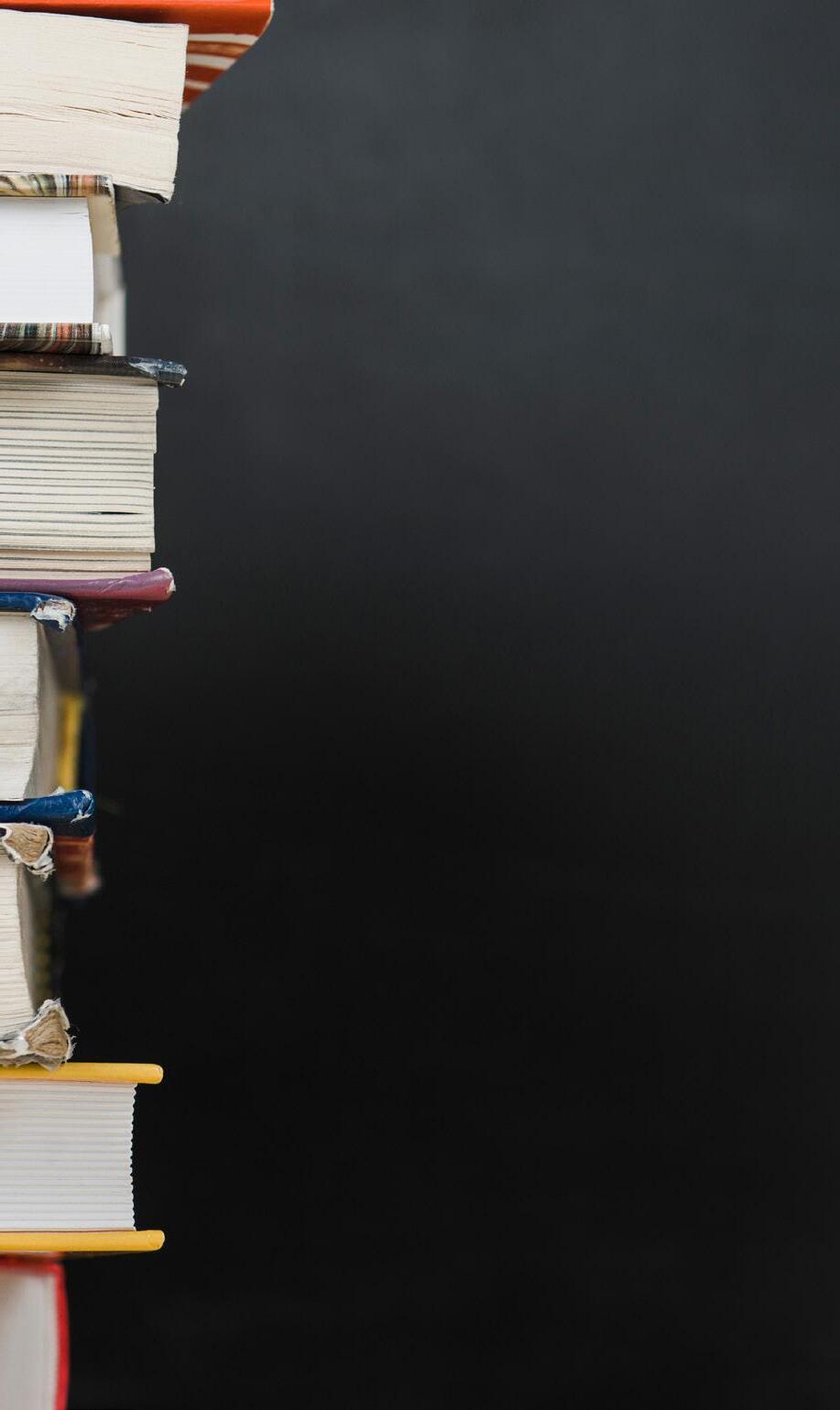
“It was not the British government that began seizing great chunks in India in the mid-18th century, but a dangerously unregulated private company headquartered in one small office, five windows wide, in London, and managed in India by a violent, utterly ruthless and intermittently mentally unstable corporate predator, (Robert) Clive.”
WilliamDalrymple



 BY VISH CHILUMKURTI
BY VISH CHILUMKURTI
Afew months ago, social media circulated a viral forward about TIME magazine’s pre-elections article on Narendra Modi, and faced a barrage of criticism over the headline which interestingly labelled him the Divider-in-Chief. It talked about how Modi had apparently divided India citing various incidents of religious intolerance. The article itself was very cumbersome to read with archaic language written by Aatish Taseer, a Massachusetts educated columnist of Pakistani Indian heritage and ruffled some feathers in the Whatsapp groups that I am part of. Even though TIME tried to strike a balance by publishing another article immediately after Aatish Taseer’s article by Ian Brenner, titled ‘Modi the Reformer’, which tried to present a view that the current economic climate in India is conducive to growth and development, it did not strike a balance with the vitriol that had already been thrown, probably because human nature tends to react to the barbs more than the bouquets.
After hearing about the protests that the Indian Independence Day celebrations in United Kingdom faced from hooligans,

it was with a sense of apprehension that I headed to Roma Parklands on 17 August for the celebrations organised by Global Organisation of People of Indian Origin (GOPIO), Queensland to mark India’s 73rd Independence Day.
It was a warm sunny day and the first thing that charged my senses was the vibrant colours on display everywhere. It was almost as if I was in a time capsule and was transported thirty years ago to the front rows of the student cohortassembled at Delhi’s Red Fort, awaiting the flag hoisting ceremony. In the backdrop there was a frenzied activity of stalls promoting Indian food, handicrafts, travel, real estate and even a police presence to prevent any untoward incidents. That is when the reverie was broken and the realisation hit me that I was not in India celebrating the 43rd Independence Day, but
this time round,marking 73 gloriousyears of a nation which boasts of current reigning female badminton world champion and an indigenously manufactured spacecraft circling the moon. India has indeed come a long way, judging by the enthusiasm of the Indian diaspora collectively representing India in Queensland and cheering the cultural performances put up by organisations of Indian heritage.
The stage was set with a veritable feast of cultural dances from different parts of India performed by children and adults of various ages. The cultural show encompassed both the traditional and the modern. Folk dances from Orissa, Kathak from the north, Bollywood style music from the west, Bhangra from Punjab, fusion music from central India, drums from Maharashtra and Tamil Nadu…you
name it and it was there on display. The highlight was the parade from the different states and cultural groups showcasing what their region has to offer and illustrate how diversity can still be a precursor for unity. Yousouf Ali Khan of the Sangeet Premi Club belted out a few golden oldies which reminded the crowd of Kishore Kumar’s melodious legacy. Patriotic fervour hit a new high with the rendition of Australian national anthem followed by the Indian national anthem sung beautifully by the angelic kids from Sargam Music Academy. The festivities continues even as the stars began peeping out of the night sky. Such was the spirit of the occasion that I did not murmur when an enthusiastic fellow desi brother cut me off in the line for masala chai and samosas. As I munched my snacks, the thought occurred to me that whatever the world media, Whatsapp groups and Twitter feeds had to say about India, the time has come for India to take its rightful place in the polity of nations and show the rest of the world the path of peace, heritage, cultural diversity and progress despite the vitriol that will be inevitably thrown and whatever the detractors of Independence Day celebrations had to say in other parts of the world.
We are so lucky to be in Brisbane where there is freedom of speech and a peaceful environment to celebrate what is truly a glorious milestone for India. Jai Hind!
YOU CAN STUDY ENGLISH AND COURSES FROM CERTIFICATE TO ASSOCIATE DEGREES, AND EVEN A BRAND NEW DEGREE. We offer various courses from automotive, business, engineering and health. Learn on the job through industry work placements. You’ll learn from industry-expert lecturers in state-of-the-art facilities.

Want to learn more about our courses visit tafesa.edu.au/international Facebook.com/ TAFESAInternational or call 1800 049 492

Showcasing the most celebrated writers, thinkers and performers from Asia and around the globe, this is an event not to be missed.
Featuring Melanie Cheng, Wu Ming Yi, Manisha Koirala, Shashi Tharoor, Charlotte Wood and more, join us for conversations about myth, privilege, history, violence, gender, hope and peculiar places.
ENHANCE JLF ADELAIDE WITH A PREMIUM EXPERIENCE
JLF ADELAIDE DELEGATE PASS Receive priority entry to all talks, premium seating, invitation to VIP events and more!
JLF ADELAIDE ADVOCATE PASS Receive all the benefits of a Delegate Pass plus tickets to two performances at OzAsia Festival!
$60pp $149pp
PRODUCED BY 1–3 NOV ADELAIDE FESTIVAL CENTRE
FULL PROGRAM ANNOUNCED SEPTEMBER
VISIT: ozasiafestival.com.au/jlf and jlflitfest.org


 BY PETRA O’NEILL
BY PETRA O’NEILL
Once a year I join a cruise to relax and recharge, to a destination that offers balmy tropical days, crimson sunsets, swaying coconut palms and golden sandy beaches. Last year it was Vanuatu and New Caledonia aboard the Celebrity Solstice, and this year having packed my most dazzling sarongs, flip flops and a few good books, I cruised further eastwards to Fiji, Samoa and Tonga.
Joining the Celebrity Solstice in Auckland, I was welcomed with a glass of bubbly, escorted to my stateroom and immediately felt at home. For the relaxing days at sea, I enjoyed robust coffee and healthy breakfasts before visiting the well-equipped gym, walking a few laps around the exercise deck, and ending the morning with healthy salads for lunch. Afternoons were spent in the cosy library, and at the café where afternoon tea
was a treat, offerings included mini lemon tarts and eclairs.
For the evening cocktail, there are many bars to choose from and the dining options are all excellent, from Asian fusion to
The sleek lines and sophisticated design of the Celebrity Solstice’s exterior are matched by interior decor that is elegant and contemporary. Staterooms are
furnished with comfortable beds, a sitting area, vanity desk, ample wardrobe space, spacious bathrooms and a flat screen TV, and most have a balcony.
There are a wide variety of shops on-board, offering clothing, high end accessories, jewellery including a Tiffany’s store, duty free cosmetics and alcohol.
The pool deck is popular, with live music and activities happening while you work on a tan. The evening’s entertainment offers a wide range of performers to please everyone including comedians, magicians, singers, trapeze artists and musicians. On a large cruise ship such as the Celebrity Solstice, everything is provided for you.
At each port, we were given a warm welcome; big brass marching bands in Fiji, and rhythmic dancers accompanied by singing and bands of musicians in Tonga and Samoa, always with a warm send-off of more music, dance and lots of waving.

On arrival in Fiji, I joined a shore excursion to explore sights around Lautoka including Hindu temples, the bustling streets of Nadi, the garden of the sleeping giant established by the Hollywood actor

It’s warm welcomes, beautiful beaches, heritage homes, bustling markets and lush landscapes - after some luxury sailing
Raymond Burr, and beautiful beaches. In Suva, an easy stroll led to the town centre, with the Museum, produce market and Indian spice shops all within walking distance.
We then cruised to Apia, Samoa, where I visited the former home of the author Robert Louis Stevenson who settled here in 1889, filled with antiques and memorabilia, the Immaculate Conception Cathedral, and vibrant market offering brightly coloured clothing, shell jewellery and souvenirs. A drive to the surrounding countryside was rewarded with lush tropical rainforests, waterfalls and stunning beaches, with a stop at Aggie Grey’s Hotel for a refreshing ale, the perfect way to end the day.
At Pago Pago, American Samoa, it was like stepping back in time, with only a handful of tourists visiting each year. Our guide said this past year had
been hectic with 9 cruise ships! In brightly painted open buses, decorated with red hibiscus flowers, we drove to a beautiful beach where we were entertained by guitar strumming musicians. The scenery is stunning with coconut palms, jagged rocky peaks, tropical rainforests and villages clinging to the shore-line around one of the world’s most dramatic natural harbours.
In Tonga, we arrived at the town of Neiafu, on the mountainous island of Vava’u. With friendly locals, churches, handicraft stores, a market, cafes and bakeries, this was a very pleasant destination.


At the capital, Nuku’alofa on the island of Tongatapu, Talamahu market offers a wide range of souvenirs. There are cafes, restaurants and ice cream parlours with long queues serving swirly bright green, pink and white ice-cream piled high onto cones. Our shore excursion took us to the Victorian style Royal Palace built in 1867, to Captain Cook’s landing site, ancient burial tombs, and drove past stunning stretches of coastline. Small farming plots appeared like a multi coloured patchwork growing different crops, lined with coconut, banana, breadfruit, and papaya trees. In each village, there are churches of several denominations and being Sunday, we listened to churchgoers, their melodious voices filling the air.
Wherever we went, we received a warm welcome, with lots of waving and calls of hello, perhaps appreciative that we’d come so far to visit their beautiful unspoilt island home.
There is no easier way to get to a far-flung destination than on a cruise ship and there are many to choose from. Talk with a CLIA accredited travel agent who knows about cruising, though Celebrity Cruises and Royal Caribbean International will not disappoint. Celebrity Cruises will soon have two ships based in Australia, the Celebrity Solstice in Sydney and the Celebrity Eclipse in Melbourne. Celebrity Cruises is well suited to adults, though it does cater for children with its Camp at Sea program focussing on educational, culinary and art experiences. Royal Caribbean International is more energy charged offering many activities for children such as rock climbing walls, bumper cars and basketball. Check your sailing for what activities are available. Sign up for email alerts so you are the first to know about sales. And for first time cruisers, these ships are big and are fitted with stabilisers so you won’t feel a ripple.



In recent times, Gen Now actors have been redefining the genre of masala entertainment. With their unconventional approach and roles, not to mention styles, Ranveer Singh, Ayushmann Khurrana, Vicky Kaushal, Rajkummar Rao and Ranbir Kapoor have erased the line between credible actor and saleable star.
‘Actor’ and ‘star’. Sometime in the seventies, Bollywood filmmakers, fans and the film press alike created a distinction between these two job profiles. The actor was someone who would win the accolades and awards for his histrionic skills, not necessarily guaranteeing hits. The star was the industry's prized possession, because he raked in the big revenues for the film trade, cashing in on an image that triggered off mass hysteria.
There were a few who managed to blend the two - think Amitabh Bachchan or Aamir
RANVEER SINGH: CHAMELEON SUPERSTAR
Ranveer Singh made clear his intention of serving entertainment with a difference with his very first film. Band Baaja Baaraat, his debut film in 2010, was a slice-of-life rom-com about two wedding planners. Ranveer's guy-nextdoor charisma worked well with the film's breezy yet realistic mood.


At a time when most in Bollywod want to jump on the BJP bandwagon to please the powers-that-be, Vidya Balan has just announced she will be bringing Indira Gandhi back to life on the silver screen.
Ask her why she wants to get into the shoes of India's first female Prime Minister and Congress mascot, Vidya will reply, “Because hers is the first name that comes to mind when I think of powerful women.”
She’ll add that she’s “party agnostic” and that she doesn’t want to have anything to do with politics. Well, we do know she’s after a good kahani…
This kahani apparently will be a web series, based on Sagarika Ghose's book Indira: India’s Most Powerful Prime Minister, the rights of which were bought by Vidya not so long ago.
The project though has been slow
to take off, Vidya will admit. “I didn’t realise a web series is a completely different format and involves a lot of work. Also, there’s so much material when it comes to someone like Indiraji, and we are going through a lot of it.”
The series will be helmed by Ritesh Batra, director of the critically acclaimed The Lunchbox and Photograph
Meanwhile, Vidya will soon be seen as Shakuntala Devi in an upcoming biopic of the renowned mathematician. On working in the film so soon after Mission Mangal, she said, "From science to maths, my best dream comes true this year. Most South Indians pursue science and maths, and I am sure my parents will now be satisfied that I traversed both worlds within the one year!"
Scientist or artist, Vidya can rest assured the fan numbers will continue to grow.
Over the years, his stature has risen and, after consecutive blockbusters, Ranveer today is perhaps Bollywood's biggest new-age hero. His gameplan, however, remains the same. His focus seems to be on signing up to a role that lets him surprise his audience, be it Khilji in Padmaavat, Bajirao in Bajirao Mastani, Sangram Bhalerao in Simmba or morphing into Kapil Dev in the upcoming 83. Indeed, his choice of roles make it obvious that he is Bollywood's most enigmatic chameleon of this generationreadily donning a new skin for a new film.
Khan - but by and large, Hindi mainstream cinema's idiom was so radically divided down the middle that no one went to see the stars - in many cases, the superstars – for their acting skills, just as no one expected the actors to score blockbusters. The changing syntax of Hindi cinema has accommodated a new breed that has carved a niche with talent, and yet can assure profitable returns for producers pumping in the money. Ranveer Singh, Ayushmann Khurrana, Vicky Kaushal, Rajkummar Rao and Ranbir Kapoor may represent varied flavours of contemporary Hindi cinema, but they stand for one thing: in an industry that is learning to create commercially viable films that bank primarily on content, these actors are all malleable enough to fit into a wide variety of roles. In short, none of them bank on a specific image.
His only failure in recent times has been the romantic drama Befikre, and the poor show of that film perhaps underlined the truth - when it comes to Ranveer Singh, regular stuff won't do. The audience has somehow come to expect something beyond the ordinary whenever he hits the screen, besides, of course blockbuster box-office shows. Balancing that larger-than-life expectation with the not-so-simple deal of a good performance every time, will be Ranveer's big challenge in the future, even as he enters the brightest phase of his career.
This one is literally the story of a rise from the ashes. Ayushmann Khurrana, it seemed, had the world at his feet with his debut role in Vicky Donor in 2012. Then came the slump. Although he did deliver Dum Laga Ke Haisha in between, most of Ayushmann's films over the next five-odd

years simply failed to leave an impact.
The turnaround that started with 2017's Bareilly Ki Barfi was a quiet but steady one. If the law of averages is indeed a reality, Ayushmann’s poor phase is long gone. Since 2017, he has been on a roll of five consecutive hits - Bareilly Ki Barfi, Shubh Mangal Saavdhan, Andhadhun, Badhai Ho and Article 15 have all been hits.

Ayushmann's box-office USP, however, lies not just in his newfound power to deliver hits. It lies in the fact that the actor has made it a habit to portray a very different role in each new film. The audience has come to expect something new from him every time. At a time when Bollywood cinema is changing, and young filmmakers are out exploring fresh concepts and characters, that puts Ayushmann in a position of huge advantage - not to mention the fact that the National Award he just won raises his stakes by a huge margin.

No one expected the lanky boy of Masaan (2015) with undoubted artistic skills to deliver one of the biggest blockbusters of the year, four years into his career. Vicky Kaushal did just that when his latest release Uri: The Surgical Strike gave Bollywood its most unlikely commercial star of the season. The blockbuster Uri has raked in over Rs 240 crore since release, and Vicky is now part of the A-list.
Vicky's phenomenal rise, along
OR JAHNVI KAPOOR IN DAISY?


+ Share your views with us on our Facebook page /IndianLinkAustralia

with Ayushmann Khurrana, perhaps signals the shape of things to come for Bollywood stardom. In an era when realism has crept into entertainment cinema, the hero will also have to be someone who can effortlessly shed all larger-than-life pretences.
Vicky's National Awards win as Best Actor for Uri marks a new high, but the actor is taking things cautiously. Despite Uri he has only two films coming up: the horror drama Bhoot: The Haunted Ship and the patriotic biopic Sardar Udham Singh where he essays the title role.
Not many actors in Bollywood can claim to have never repeated the same act, and won over fans despite never bowing to stereotypes. If Rajkummar Rao fits that bill, he has also carved his niche by defying every cliché that normally defines the Bollywood leading man.

Indeed, Rajkummar has defied all odds in Bollywood. He shot to fame doing a bit role in an art film (2010's Love Sex Aur Dhokha) and sustained on supporting acts for three years. And then, when he had his first prominent leading role (Shahid in 2013), he won a National Award as Best Actor for it! He doesn't hesitate signing up for heroinedominated subjects (Queen, Stree, Ek Ladki Ko Dekha Toh Aisa Laga, Judgementall Hai Kya).
Perhaps the key to his survival and thriving lies in that last bit. With Rajkummar Rao, there is no casting
hassle. He can easily fit into any role as long as there is scope to perform. If versatility is increasingly becoming an asset in Bollywood, Rajkummar is indeed looking at a busy career ahead.

Being born in Bollywood's first family was an advantage, of course, but it does come with its woes, too. Ranbir Kapoor's decade-plus career in Hindi films has overwhelmingly been dictated by one question: can he live up to the legacy of his father Rishi Kapoor and grandfather Raj Kapoor?
Ranbir's strategy to survive the harsh glare that question brings in its wake, is to by and large portray a cool-dude image, on and off the screen. It is an image that, driven by expert PR, has let him play the field as a ladies' man, and some of his biggest hits have also been films where he has been the affable youngster.
The going has been rough for Ranbir lately because, barring last year's Sanju he has no clear winner at the box-office since 2013's Yeh Jawaani Hai Deewani. His ambitious upcoming Bhrahmastra has been pushed back, and his other film is a period drama, Shamshera. Lately, he has been more in the news for rumours pertaining to his romance with Alia Bhatt.
Still, no one is writing Ranbir off. For the simple reason that, beyond his obvious advantages of innate glamour and proven acting skills, Ranbir is a thinking actor-star.
Vinayak ChakravortyFor more caption entries, see YOUR SAY Page 07
Minal Khona has been reading tarot cards for the last two decades. She uses her intuition and connect with the cards mostly to help people.

You stay busy with self-assertion, your own business, and being social but alone. Don’t shut others out, and let them know how you feel. Business improves; a new relationship or marriage proposal is on the anvil. A new project keeps you mentally engrossed; and money will come through new or repeat orders. Tension headaches could besiege you. Though you are self-reliant, help will be provided. Your decision regarding a matter will settle your future path. Success comes through new ventures.
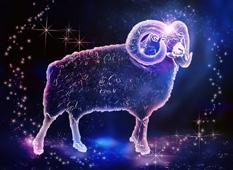
GEMINI
May 21 - June 20
A tough month for Taureans and a lot could go wrong. Separation, divorce, financial problems and difficult times could get you down. But, the worst is over and things will improve. Those on the verge of a break-up will do so and a divorce is imminent. A sudden loss of income is predicted. Rest before you start a new project. Medical expenses could be incurred. Discordant relationships end, bringing peace. What looks hopeless is not the final result, so have faith.
VIRGO
Aug 23 - Sep 22
The card drawn for you represents the Zodiac sign of Cancer, suggesting moody Leos could go into their den and hibernate. If single you will look for romance: many opportunities come your way. Self-promotion at work could face hurdles. If you wish to be self-employed and independent, chances are you soon will be. You feel ill and cranky so visit the doctor if you feel the need. A disagreeable situation comes to an end. Success comes from personal integrity.
SAGITTARIUS
Nov 22 - Dec 21
The card drawn for you represents the sign of Leo so the gregarious Sagittarian could go a bit wild this month, following their passion. You have a busy social calendar, get-togethers, love affairs, family matters etc. You are also in a mood to share your good fortune and help those who need support. A passionate romance is on the anvil. Spiritual matters intrigue you this month. Good news on the work front is foretold. You attract what you need to succeed.
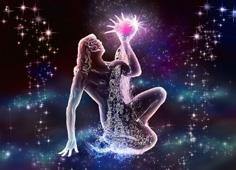

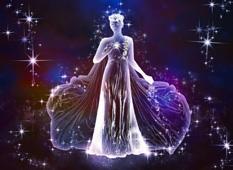
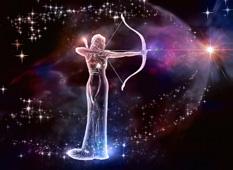
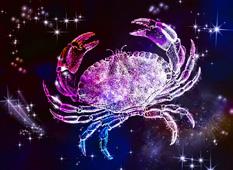
If you have important paperwork to deal with, do not rush through. Changes can be expensive so make sure they are worth it. A sudden advantage in your love life or finances is foretold. Problems with breasts, aches and pains indicate you need a check-up and some rest. A friend will help you overcome the current problems you face. A business associate or lover could let you down, but things will work out. Maintain balance and take things slow.
Sep 23 - Oct 22
Self-doubt, confusion, difficulties in dealing with loved ones and financial hardships could come your way. A tough month, as you might even need medical attention for a health problem or an injury. Possible losses at work and disagreements over contracts could make your job a chore. A clandestine love affair is foretold. Money will come eventually even if you are strapped for cash now. Avoid getting into a poverty-of-spirit frame of mind. Spiritual guidance will see you through your hurdles.
CAPRICORN
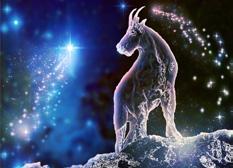
Dec 22 - Jan 19
If in a new relationship, it will be stress-free but no fireworks. An existing relationship could get hostile due to pent up pressure. Business expands but watch out for losses on the personal front. You might even decide to end a relationship and move on. Eye infections could occur and money is tight so be prudent with expenses. A sacrifice of some sort will have to be made – let go and let God. If fighting a lawsuit, you will win.
You might find yourself pushed into a corner over something: hold your own and don’t give in. In a relationship, you seek clarity and commitment even as unexpected problems come up with business plans and family. But, you will handle work and finances well even though your focus is currently on your love life. Don’t take on more than you can handle and be careful about what you eat. Singles could soon be in love. Be true to yourself in everything.

Jan 20 - Feb 18
The focus is on emotional turbulence due to difficult schedules, discouragement or business loss. Tension related health issues and aches and pains could besiege you. Disappointing elements make you lose incentive to work. The internal conflicts that analytical Aquarians keep having will come to an end. Success comes through a new career direction or a romantic change of heart. Good will prevail so hang in there, positive changes are coming. Maintain a calm demeanour and things will settle down.
You could get an unexpected financial or career opportunity, a job offer and even support from your boss. The new assignment could lift your spirits. Nostalgia for the past overwhelms you even though you don’t want to go back. More money than you anticipated could come your way. If you are tired or depressed, take a break. Recognition in your career will come. Cultivate your intuition and faith to everyday life. Things will work out better than you expect.
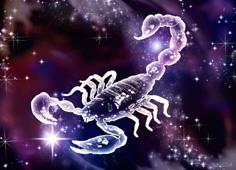
Oct 23 - Nov 21
A Leo could be a major influence this month. There could be challenging situations in matters related to business, family or finances. A new relationship faces a block due to your attachment to the past. At work, persevere and get the job done; recognition will follow. An unexpected event leads to more money and you will clear debts if any. If someone is being difficult, you can use love and kindness to win them over. Spiritual forces at work are on your side.

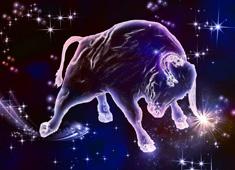

Feb 19 - March 20
Threes indicate group activities; delays with the promise of success. This month you choose to heal yourself, spiritual awakenings and time with pets. To love others, you need to nurture yourself first. A personal dilemma works out quicker than expected. You toy with the idea of looking for less taxing work. Avoid bingeing on food or liquor. Money owed to you comes through. Be clear what you are striving for and take the risk of failure. Don’t let others intimidate you.
Seldom has the world seen a crop of so many powerful figures ruling different parts of the globe at the same time as now. When someone in authority behaves in an autocratic manner it is said that power has gone to his head. Even with a casual look at each one of theruling strong men – yes, all of them are men at present - you will realise that much more than power has gone to their head. A good crop of hair; and on top of that, everyone with a unique style.
What has hair got to do with power? A lot, it would seem.
Let me start from America, a super power for so many decades but now somewhat sliding. The Commander in Chief of the US has an unUS ualcombover coif that resembles a thick sheaf of hay yanked towards his forehead. However, pics from his younger days, currently played on the TV covering the dark deeds of Jeffrey Epstein, show that
Beautiful, highly educated 33-year-old vegetarian Brahmin girl with very good family background, soft spoken, career-oriented, working, well settled in Sydney, seeks an educated, teetotaller match with good family background. Prefer Australian citizen or PR. Please contact rajsyd83@gmail.com
Dubai-based 40-year-old single girl, never married, seeks suitable match. Born, educated in Mumbai, Gujarati, 5’4” and working for MNC. Seeks Hindu groom. Please contact brother on 0412346590 or email directly on komaldxb@gmail.com
Donald used to have a thick mop of dark hair combed like any other guy. How did that turn into a sort of golden hue? Looks like whatever this wheeler-dealer touches turns into gold except, of course, his unsolicited offers of mediation to other world leaders.
Moving on to the county that lays claims to the next superpower status, supremo Xi Jinping has such wellgroomed and neatly partitioned radiant dark hair that will be the envy of anyone half his age. If he wasn’t occupied with his day job of being the PRC’s long-term president, he could easily have become a red hot poster boy for Brylcream (remember this famous hair-cream of yore) ads and rule the global media scene. He still pervades the media world
though, as he and Trump try to get the other by the short hairs in their tariff war.
However, Xi’s neighbour and the nemesis of North America, Kim Un Jung, has the ultimate crowning glory with the most unusual mop on his head. Although no one would dare to mimic him in any way, his hair-brained idea is copied all over the world. There won’t be any hairsplitting argument as to who holds the trump card in the style stakes, since his has become a fashion statement. His first head-to-head meeting with Trump in Singapore gave hopes of an agreement only a hair-breadth away but ultimately it turned out the gap was much wider than a hairline crack.
In contrast, Narendra Modi with grey
top and matching well-trimmed beard presents a picture of saintly poise and scholarly look mixed in a modified proportion.
Closer to home, former PM Kevin’s ‘nerdy’ hairstyle gave him a head start in 2007 over John Howard who was the only second prime minister to lose his head in an electoral battle. His successor Julia Gillard’s red hair, besides her association with a hairdresser, attracted more than a fair share of comments from every quarter.
The latest heir to the throne to join the chorus is Britain’s Boris Johnson who looks like he wears a bird nest on his head. Perhaps he should wear a hat while in a wooded area, to avoid a winged creature taking refuge up there. Brexit is ok but not bird-sit.
There is now a group of winners in all this - cartoonists. They’re having a heyday as they let loose their creativity on each of their subjects’ crowning glory.
It may be worth a doctoral thesis to analyse if there is any link between hair and power. There is at least a mythical example to start with - Samson, who lost his power once he lost his hair.
Hear, hear.
Seeking professionally qualified settled match for Sydney-based girl. 46, 5'3". Slim, fair, attractive, never married, Aus citizen, Hindu, Punjabi Khatri background. Girl is postgraduate and is working on a good position in government organisation. Please send details with photoIndsyd2016@gmail.com.
Seeking groom for my niece, beautiful, 30, 5’ 5”, fair, pleasing personality, Management Consultant in Ernst and Young, Singapore, caste no bar. Only child in family, both parents are doctors. Please contact lalitm67@gmail.com, Phone: 0411 058 064
Seeking professionally qualified well-settled match from Sydney for ‘88 born Hindu Punjabi girl. 5’3", divorced (concluded) after brief marriage of 1.5 years. Working full time with a leading University in Sydney. Pref teetotaller. Aus PR or citizen only. Email: matrimonial.ml@gmail.com

Seeking a suitable match for our 25-yearold daughter, working as a junior doctor in NSW. Boys from a similar academic background or qualified professionals based in Australia are preferable. Please contact ajaygupta101@hotmail.com or +91 93296 66301.

Seeking professionally qualified settled match for Sydney-based man, 45, 6', athletic build. Never married Aus Citizen, Hindu, Punjabi Khatri background. Project manager with engineering background, he is working in a private organisation. Please send details with photoIndsyd2016@gmail.com

There is now a group of winners in all this - cartoonists. They’re having a heyday as they let loose their creativity on each of their subjects’ crowning glory.
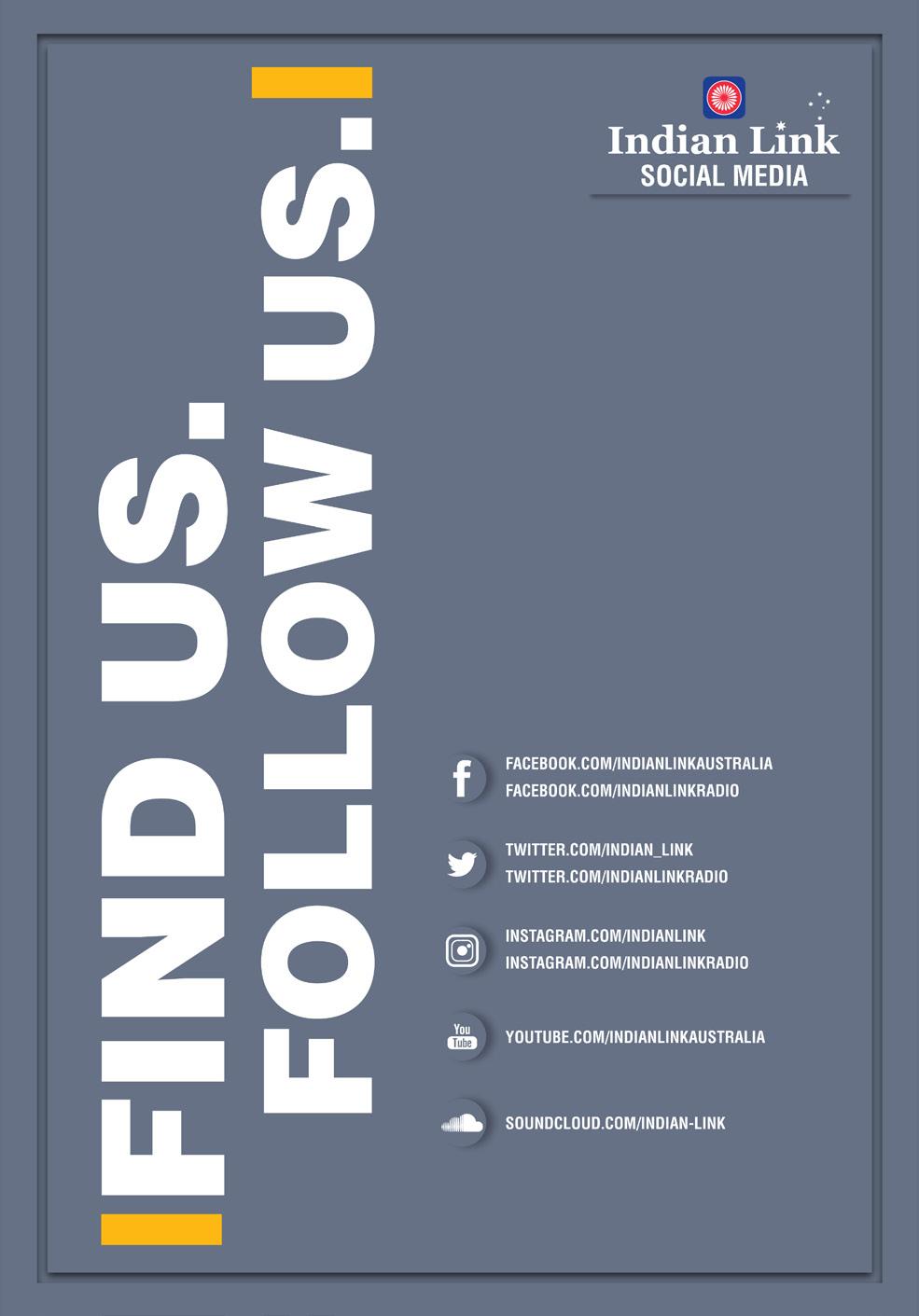
With more Inspectors out there, if you’re running an unsafe workplace, you will be caught. Keeping your employees safe is your job. Making sure you do it, is ours.
Everyone. Every workplace. worksafe.vic.gov.au
